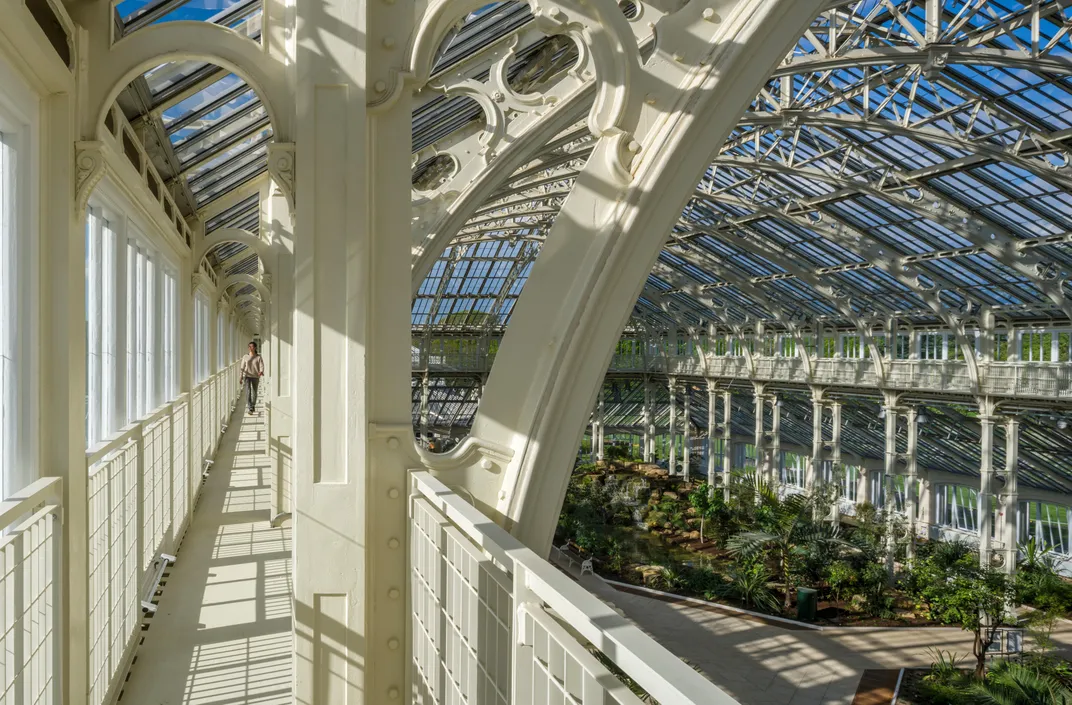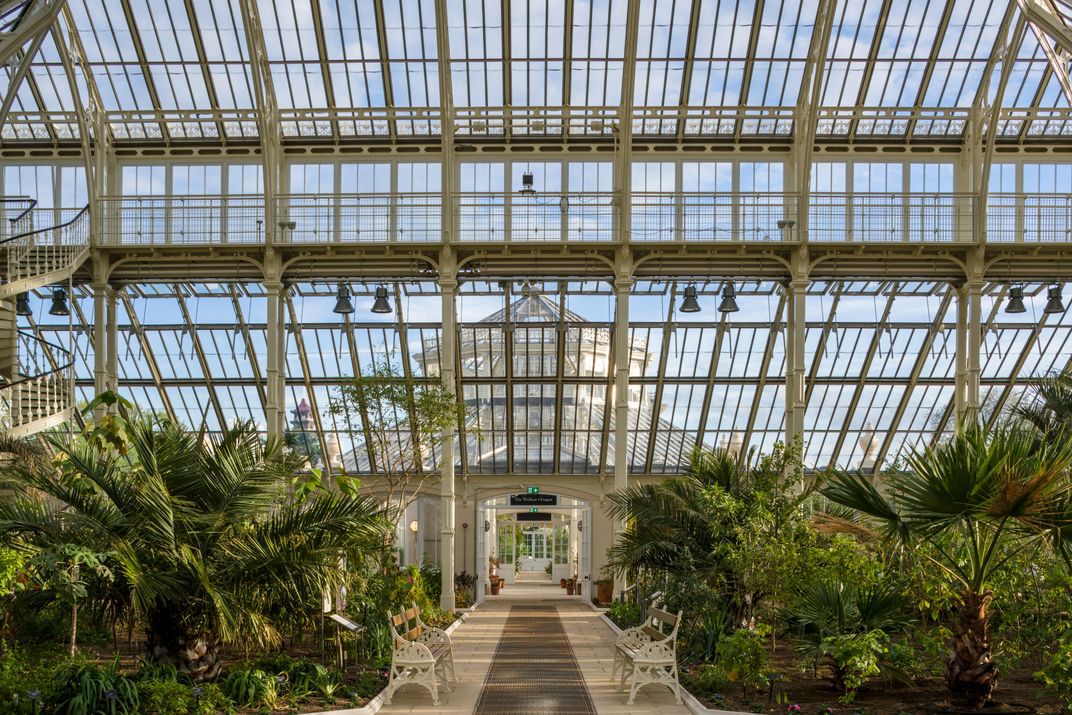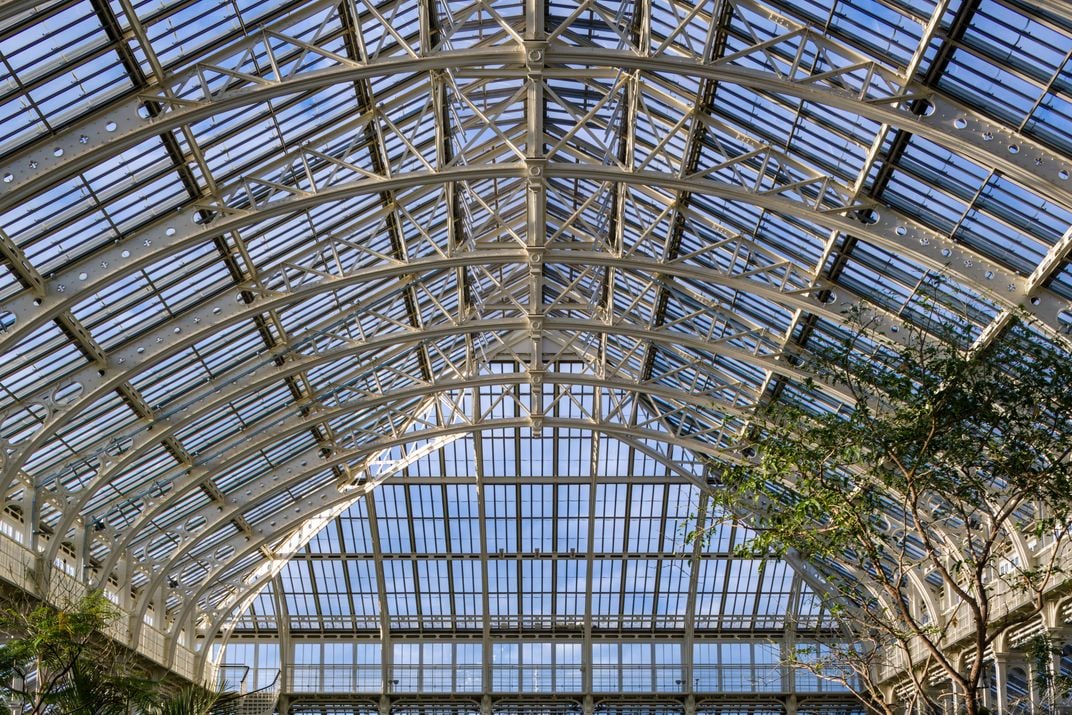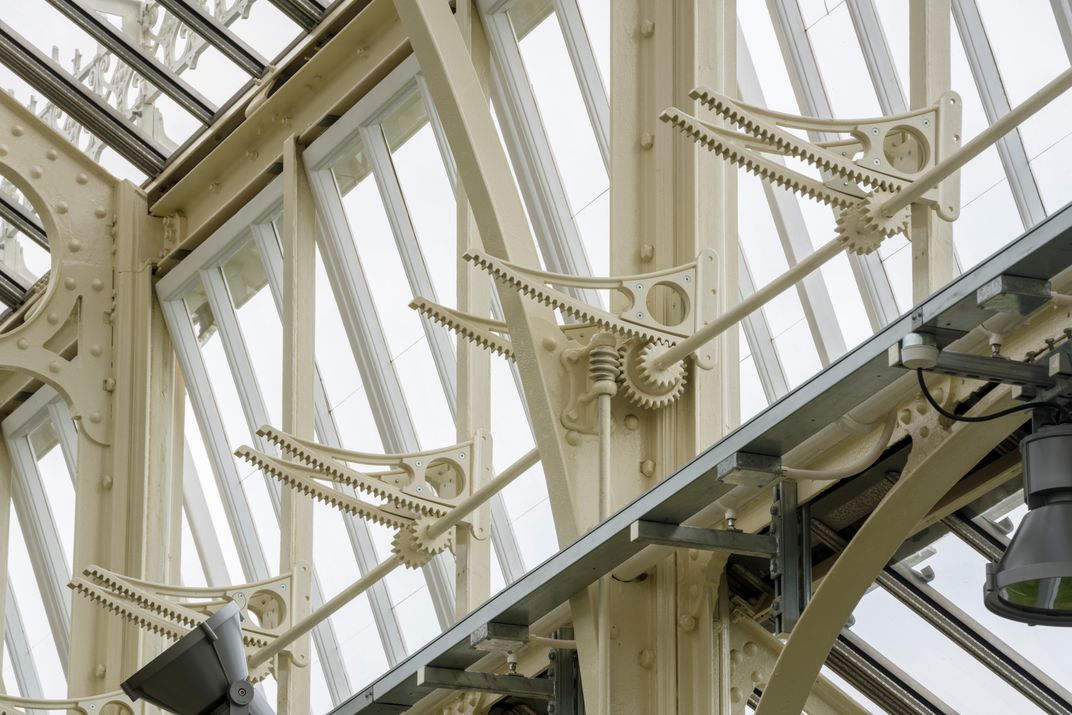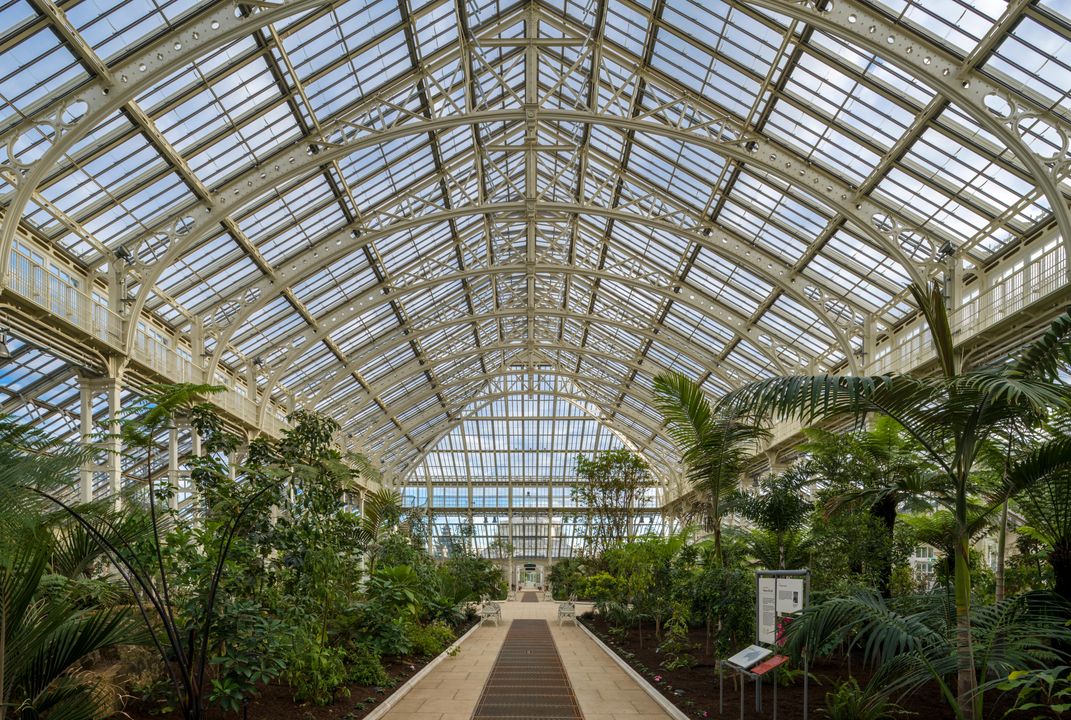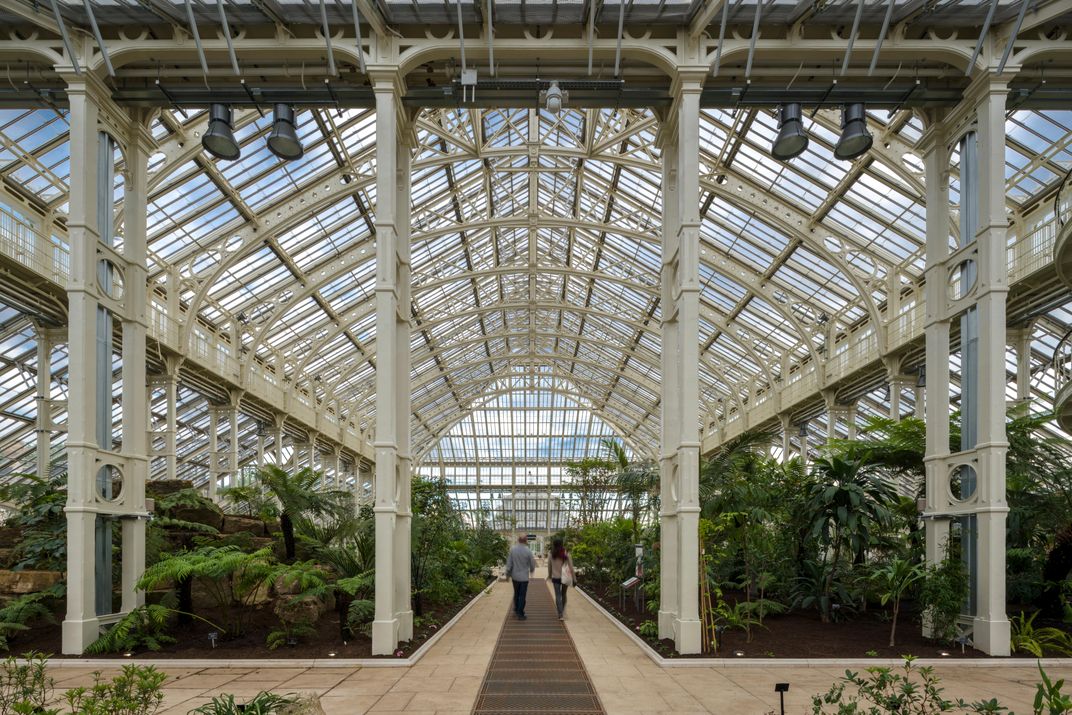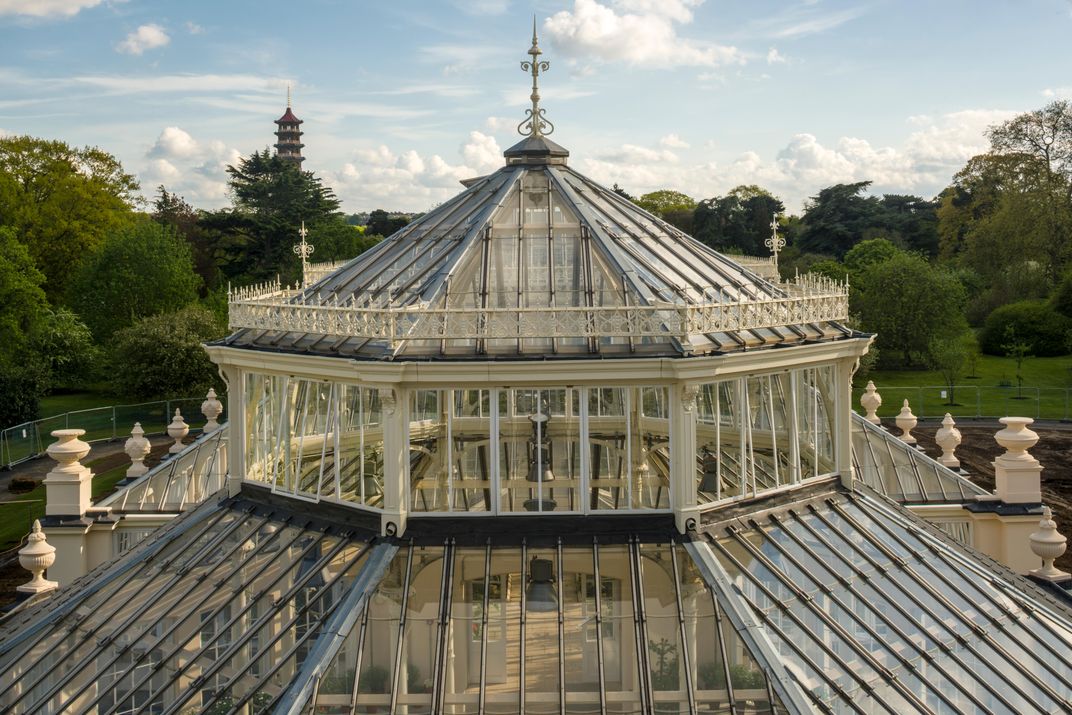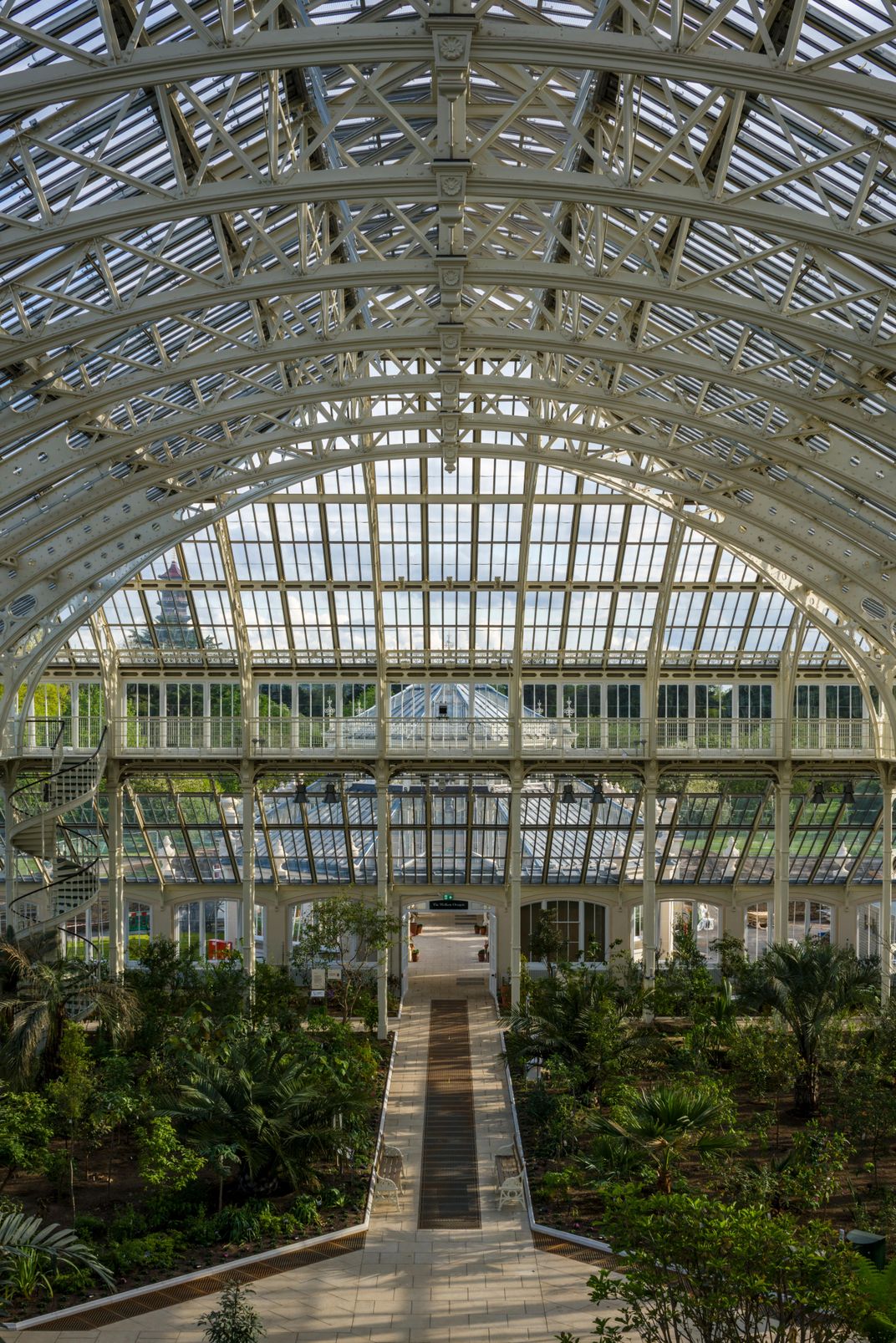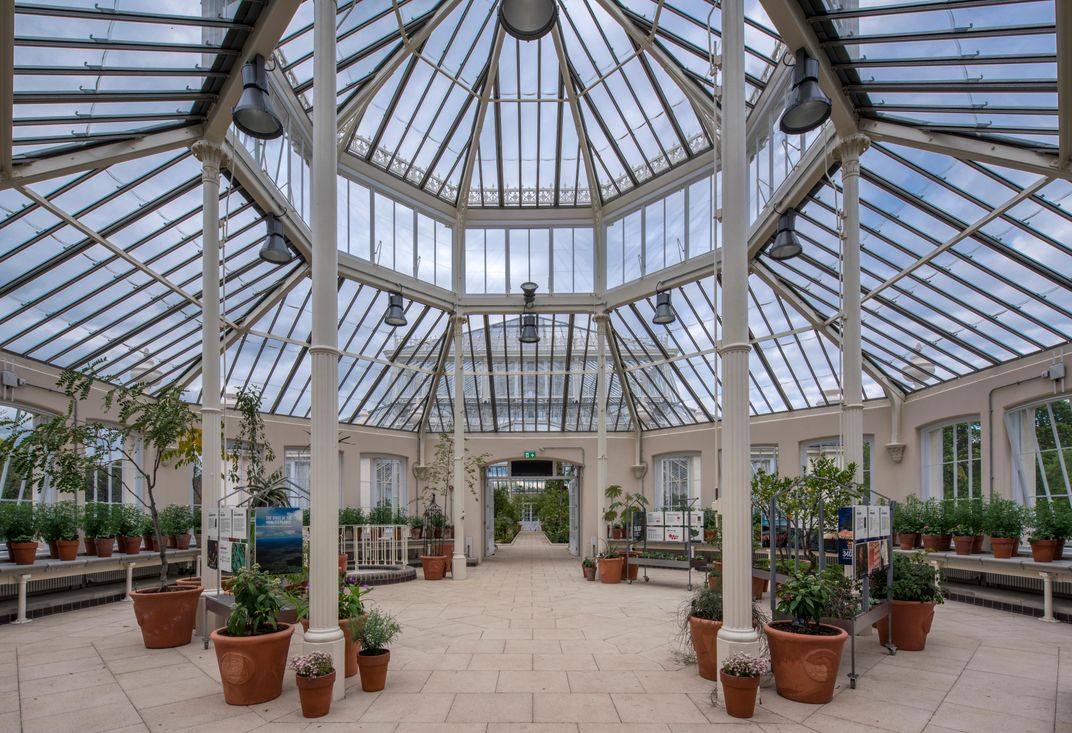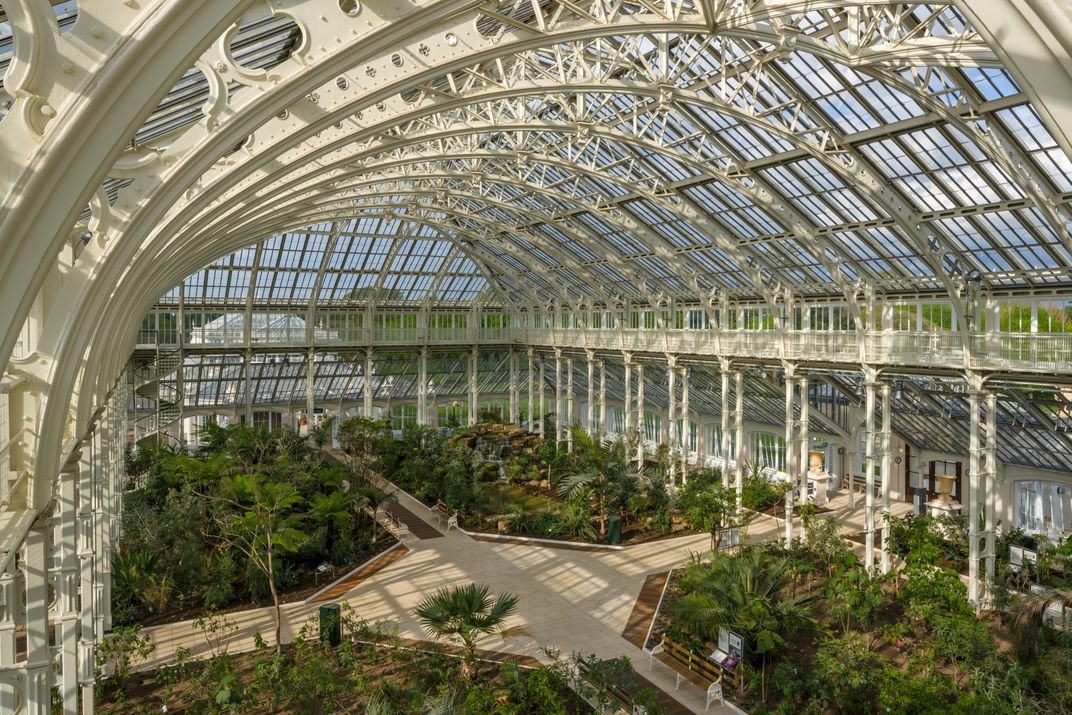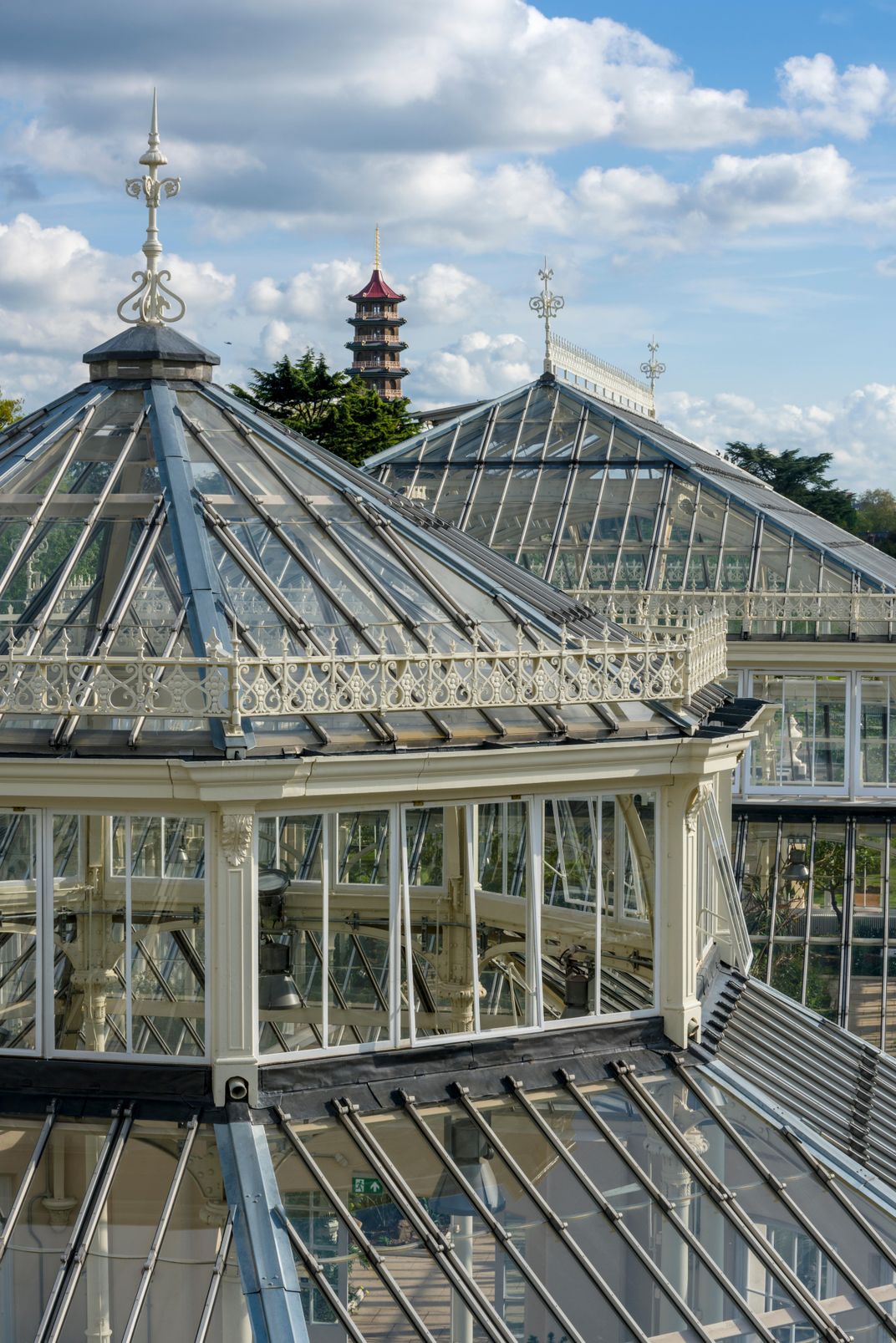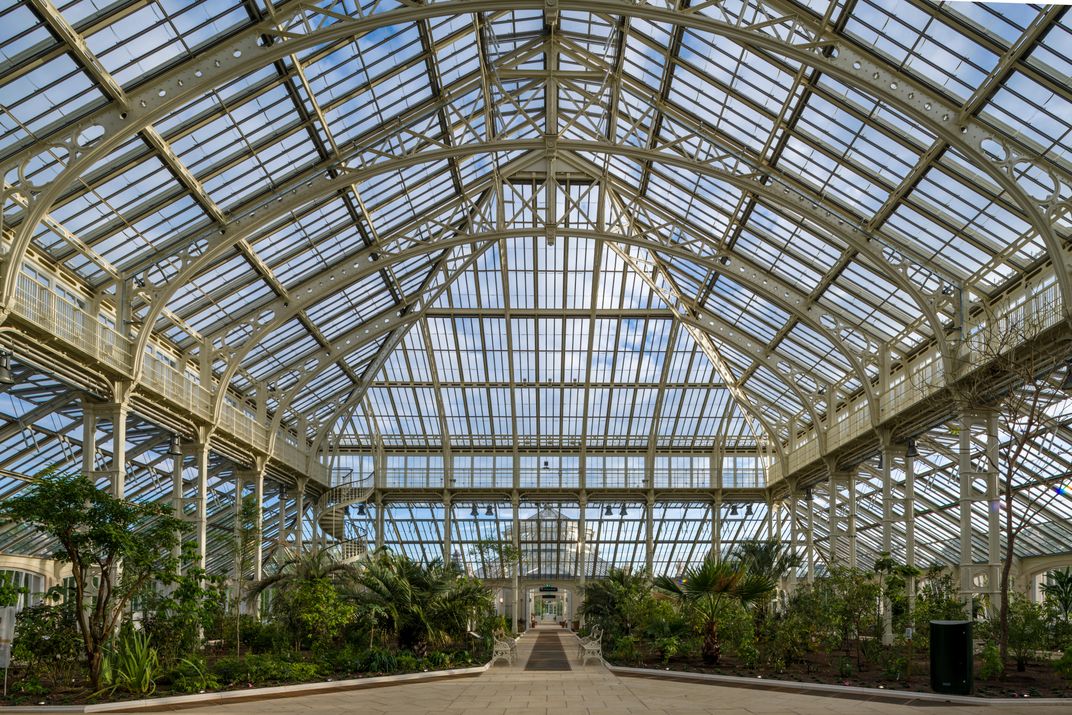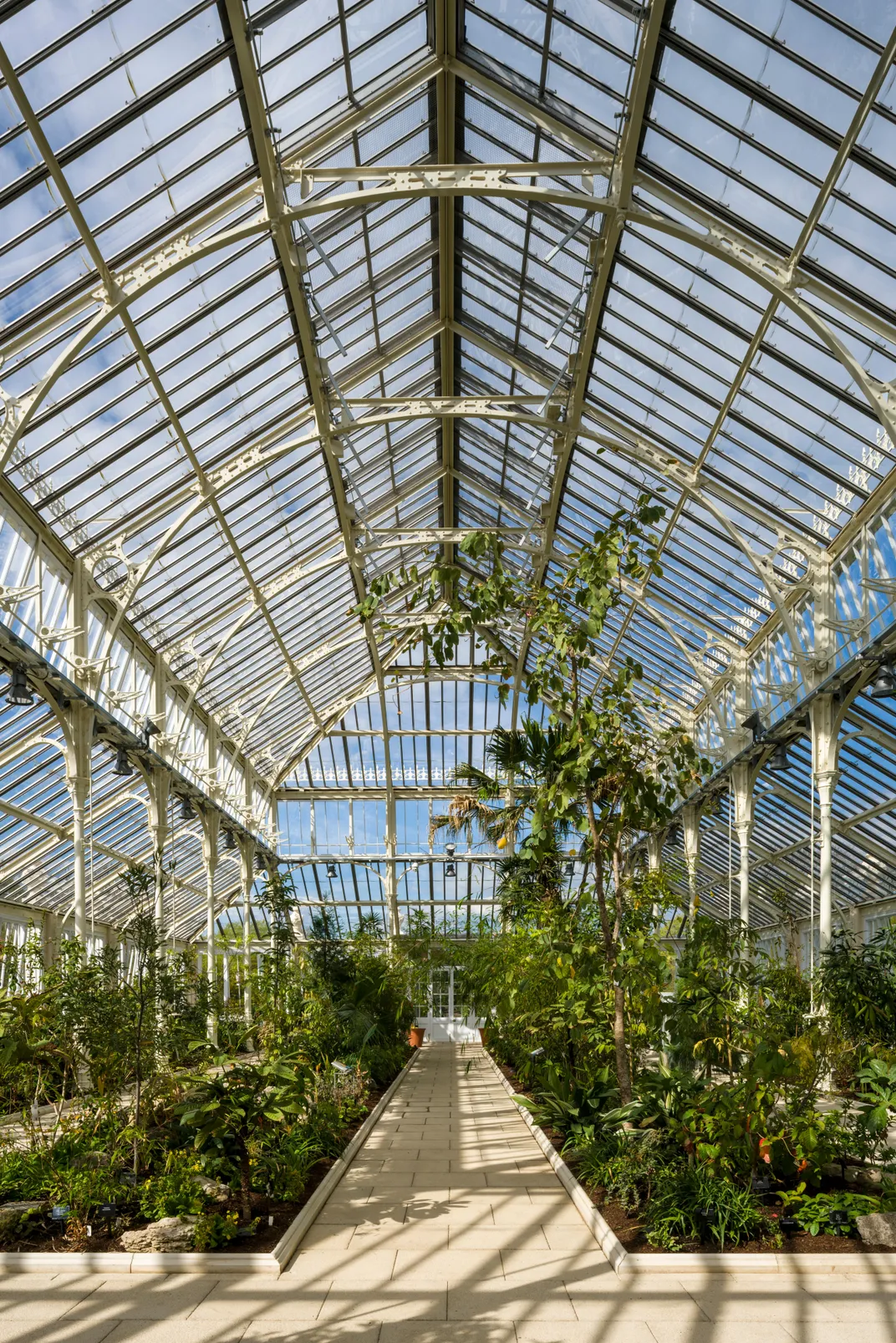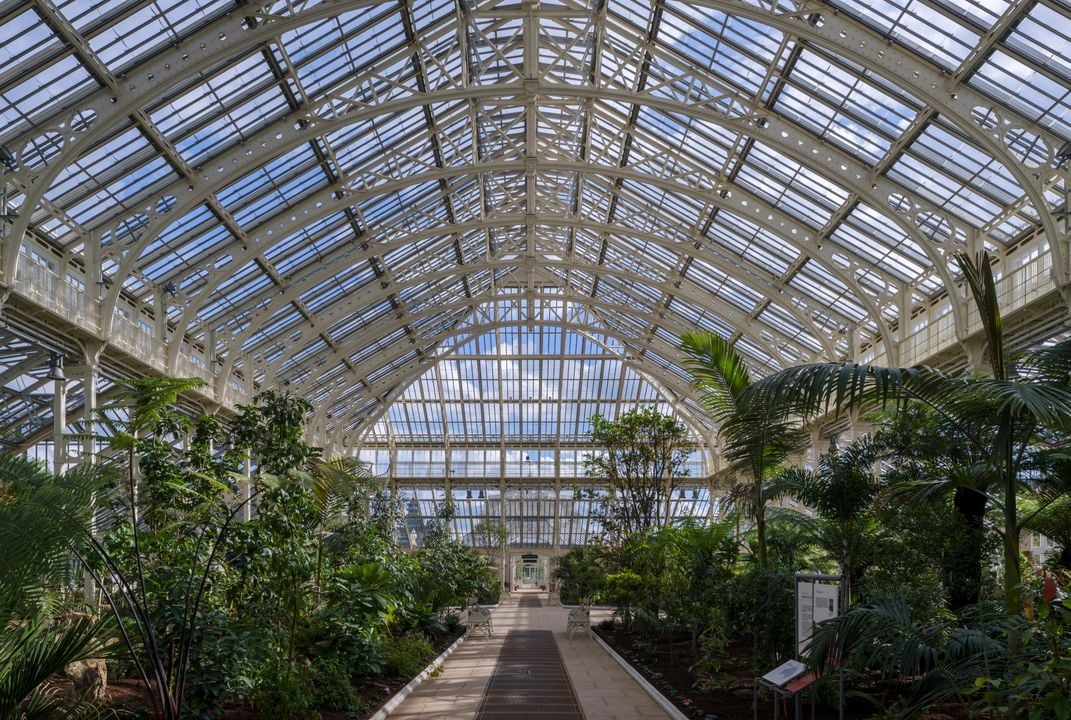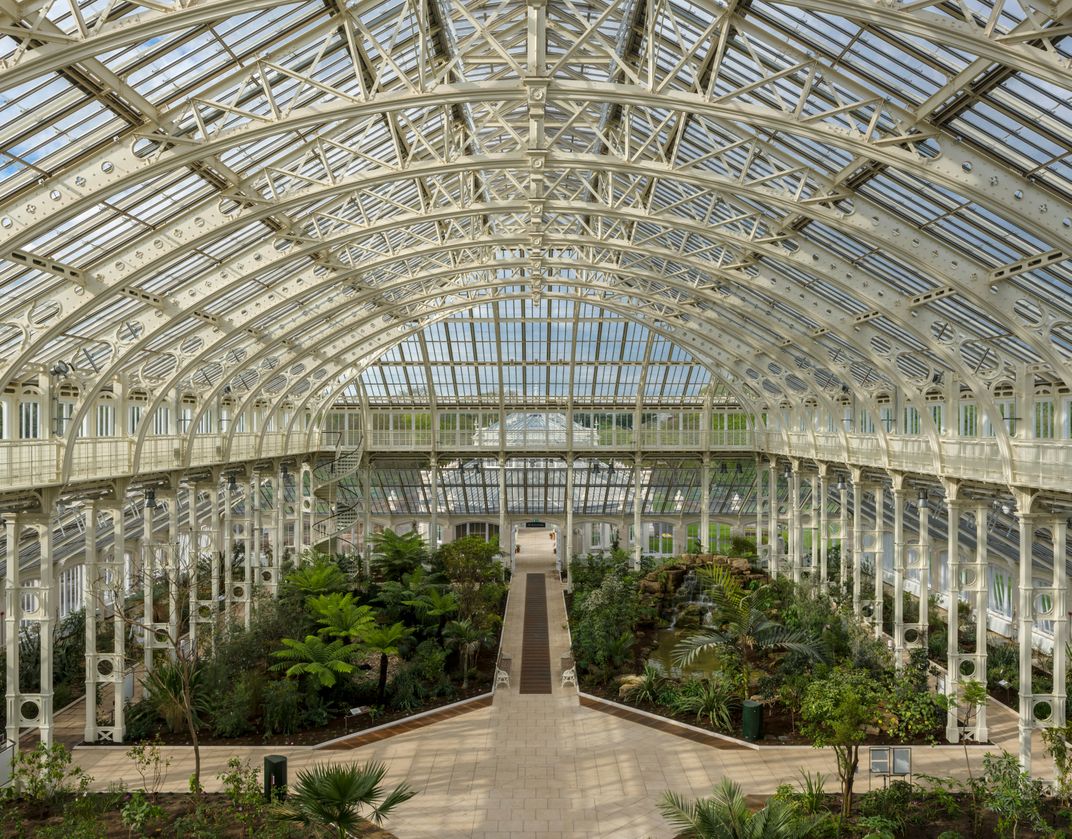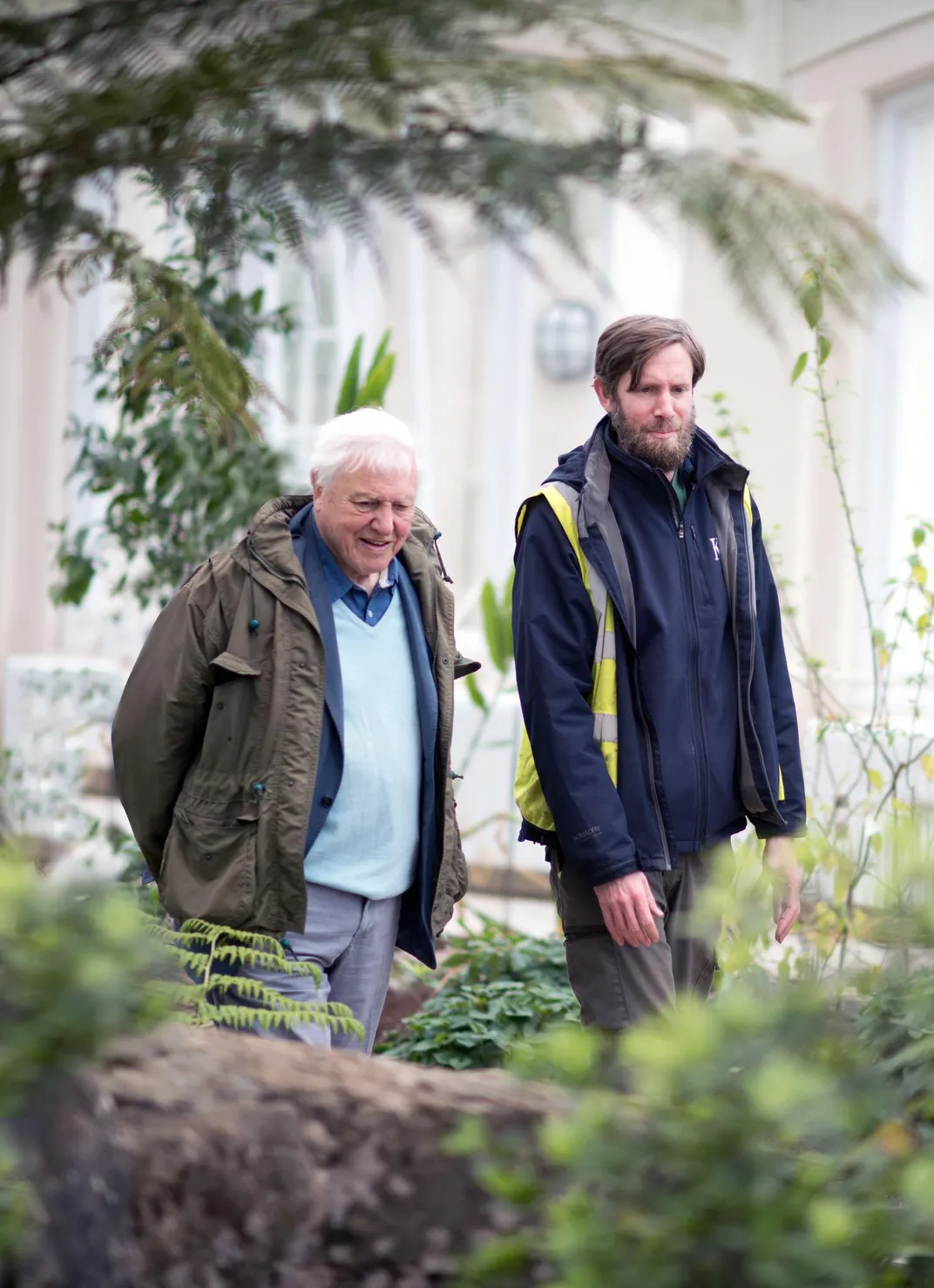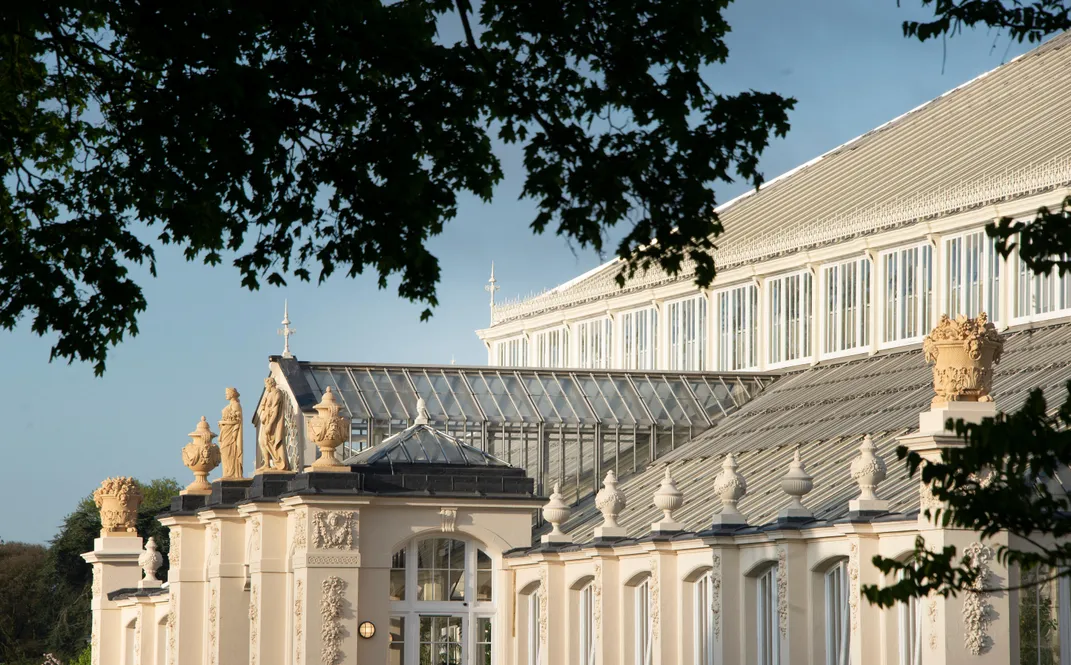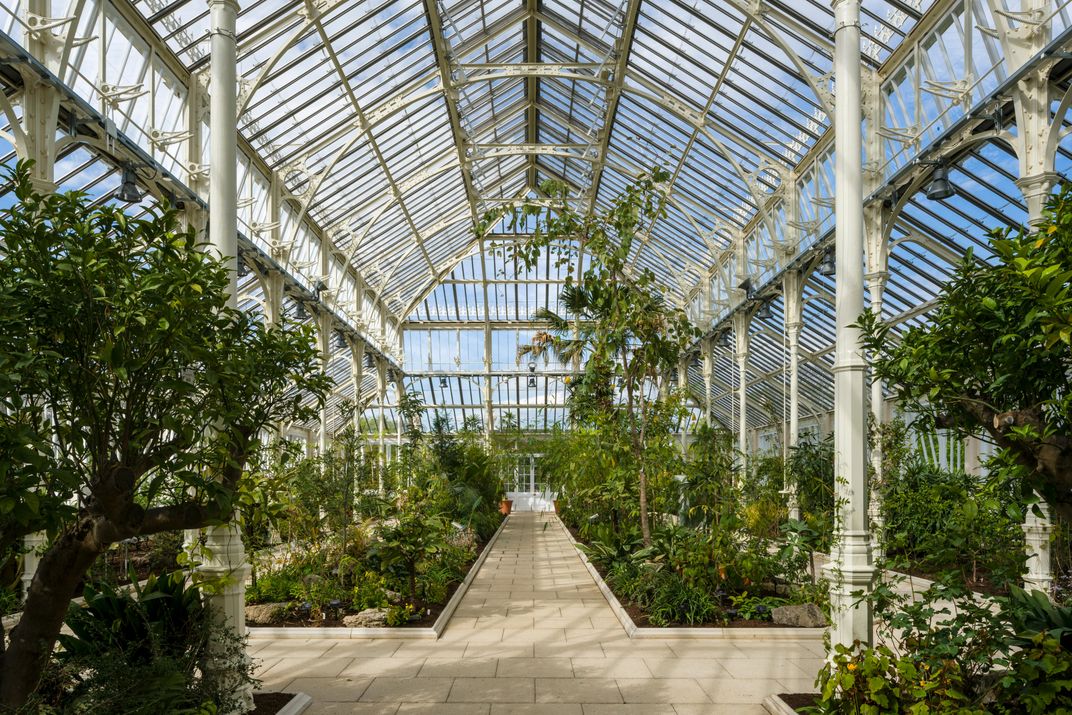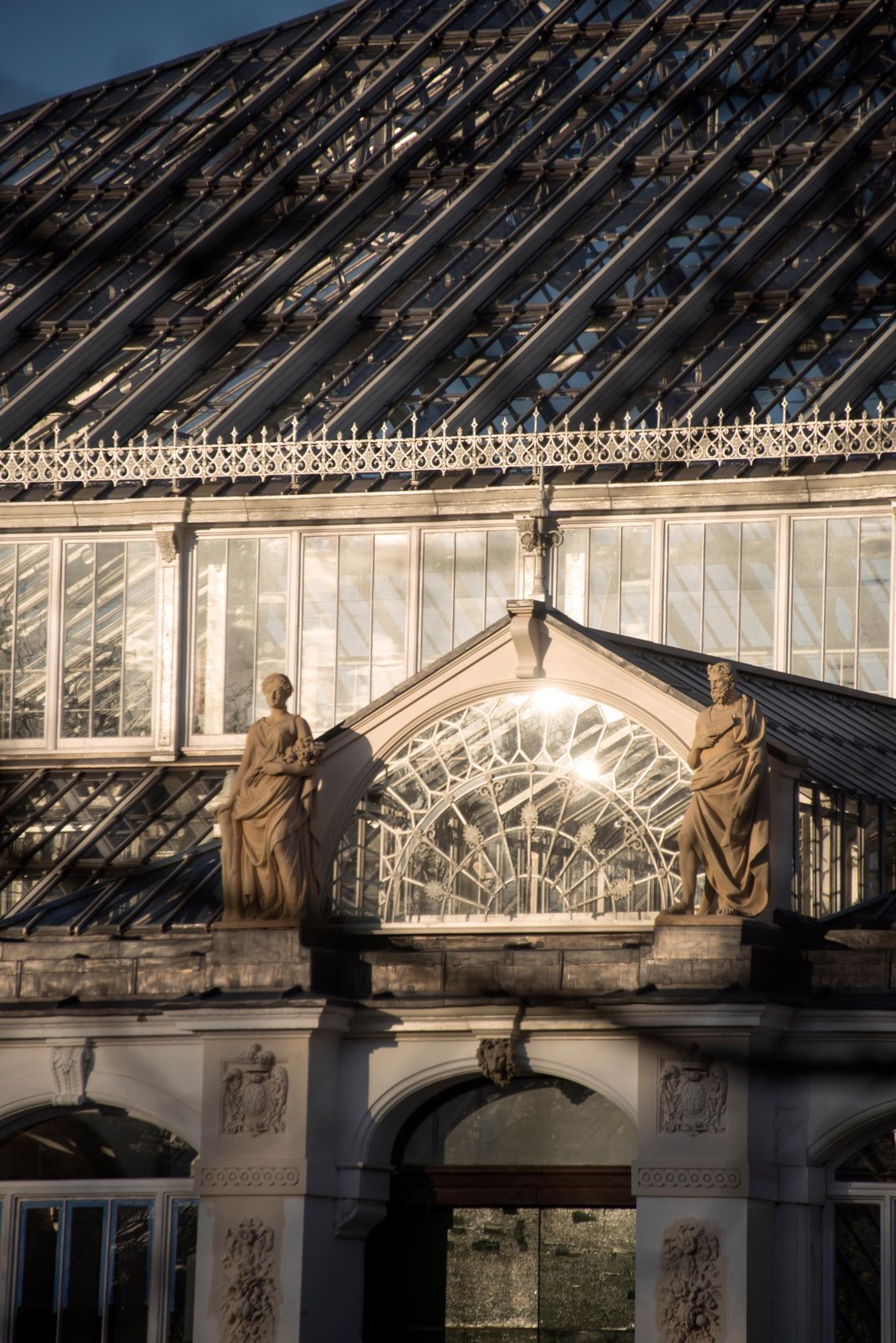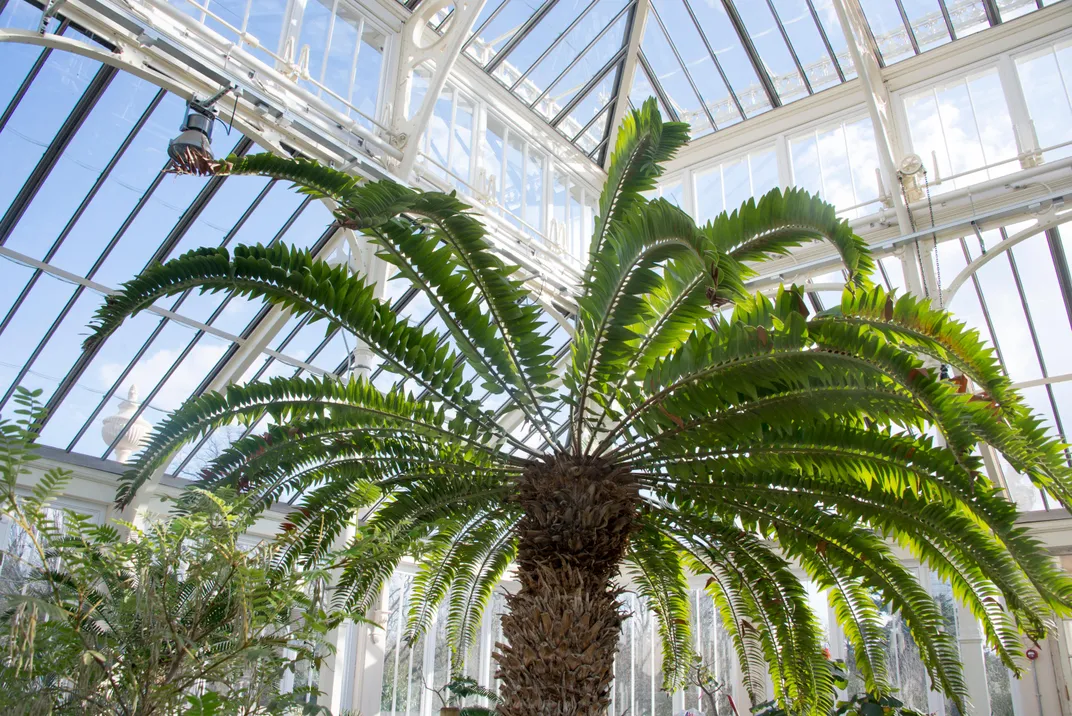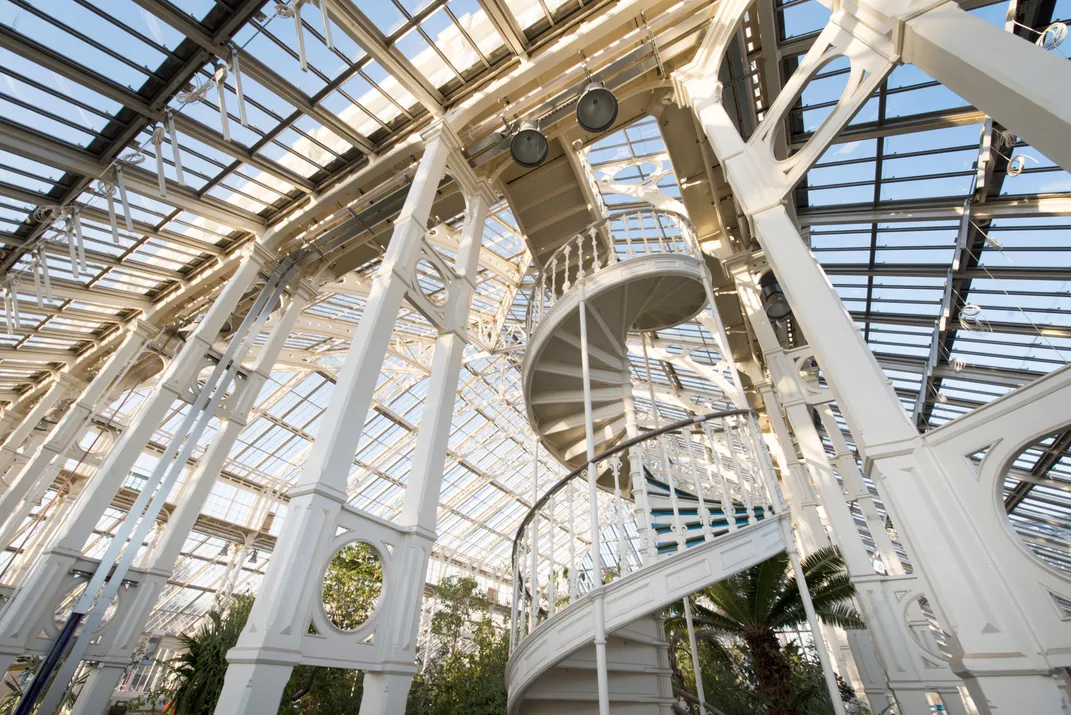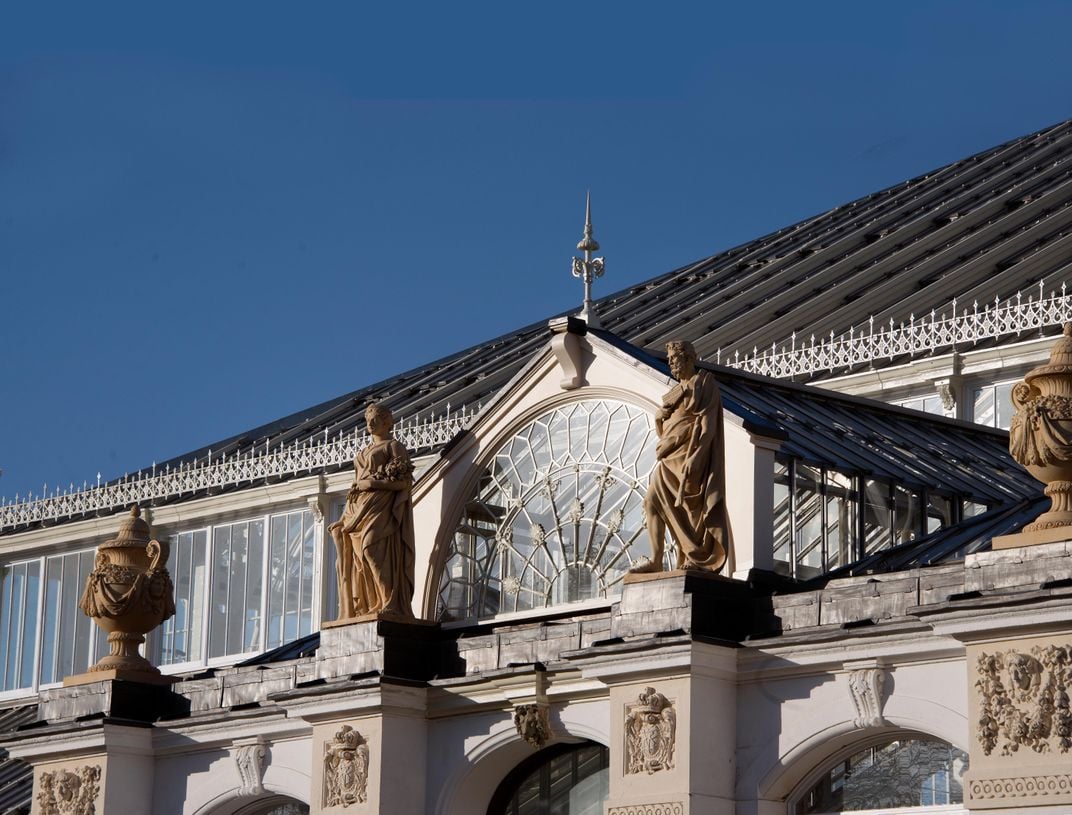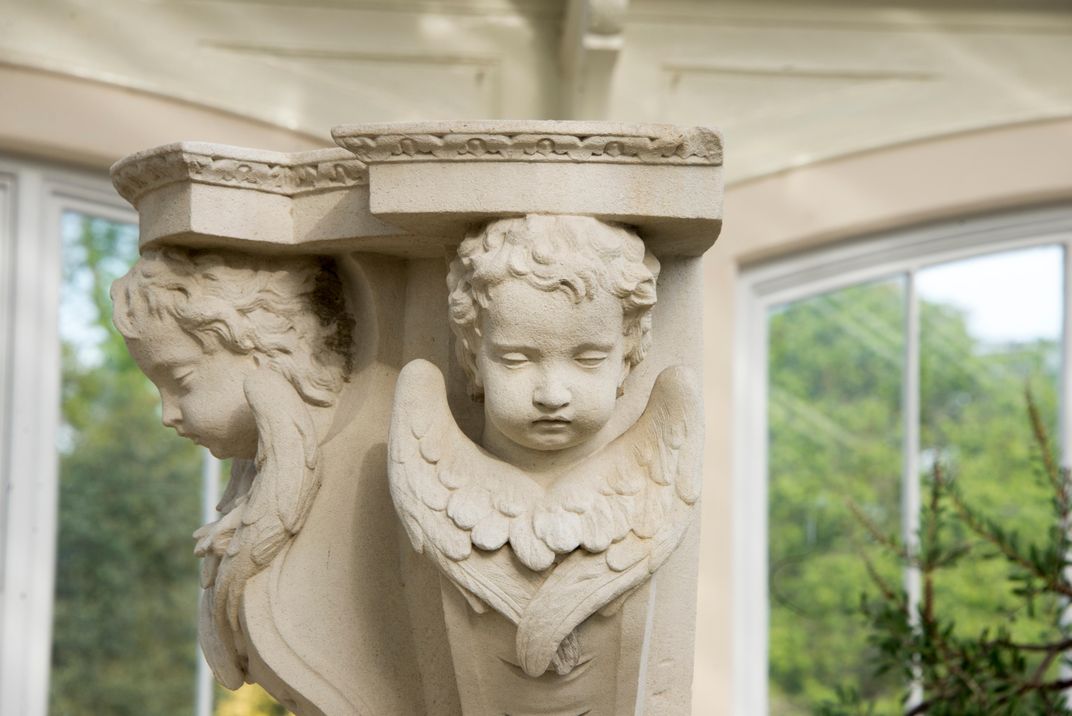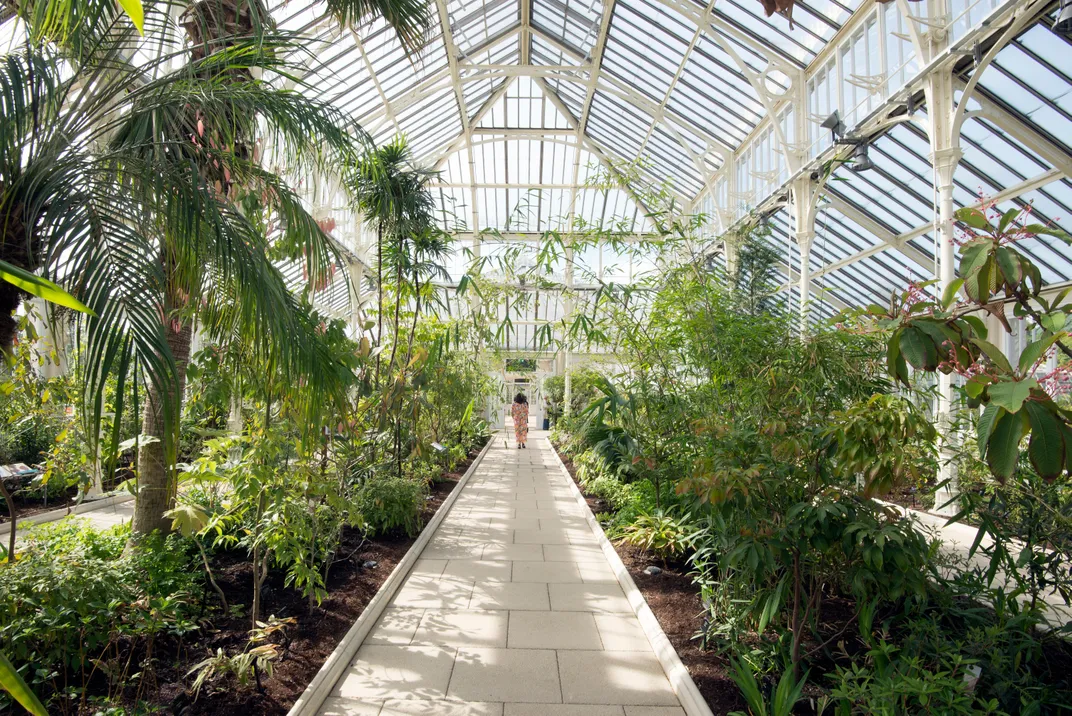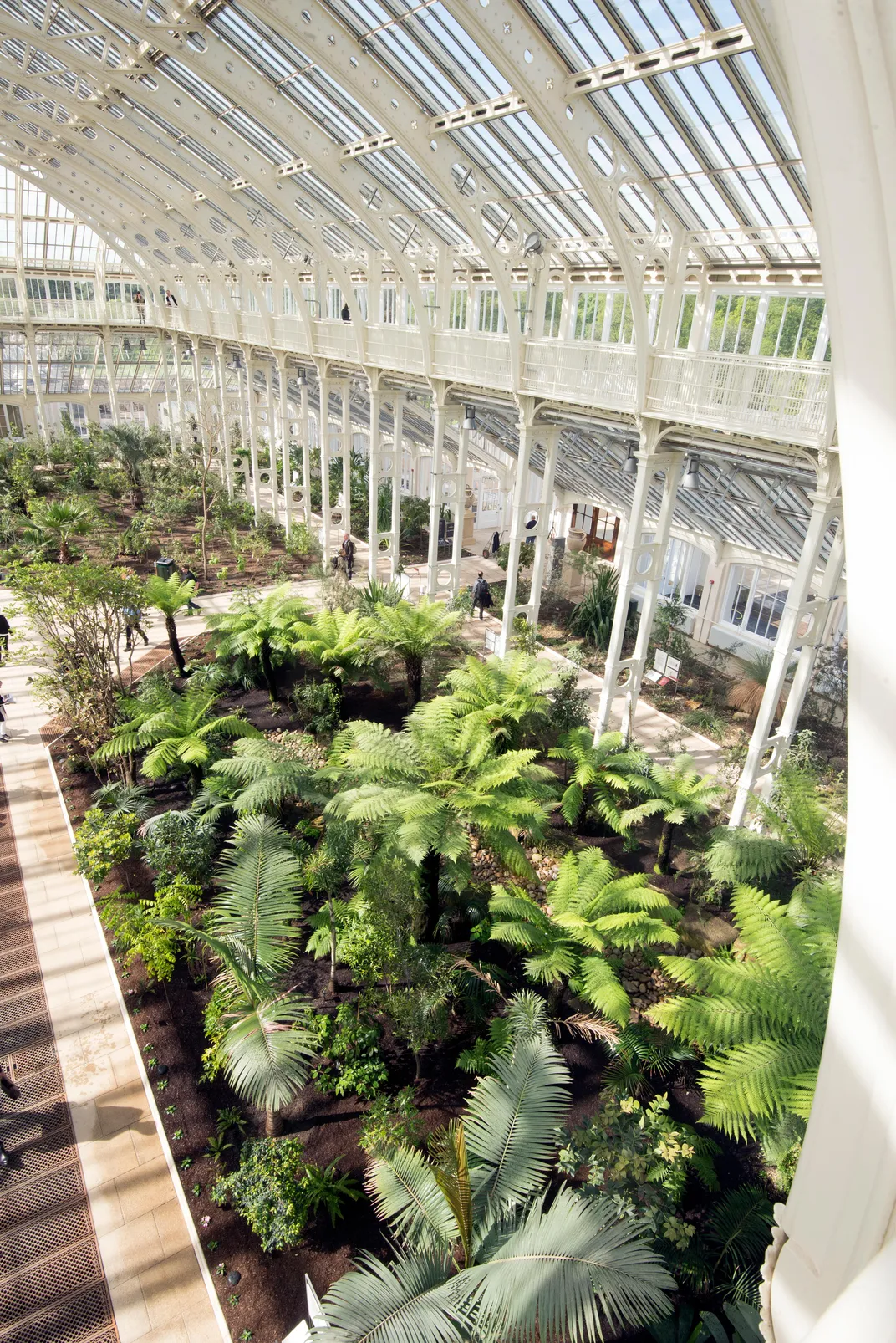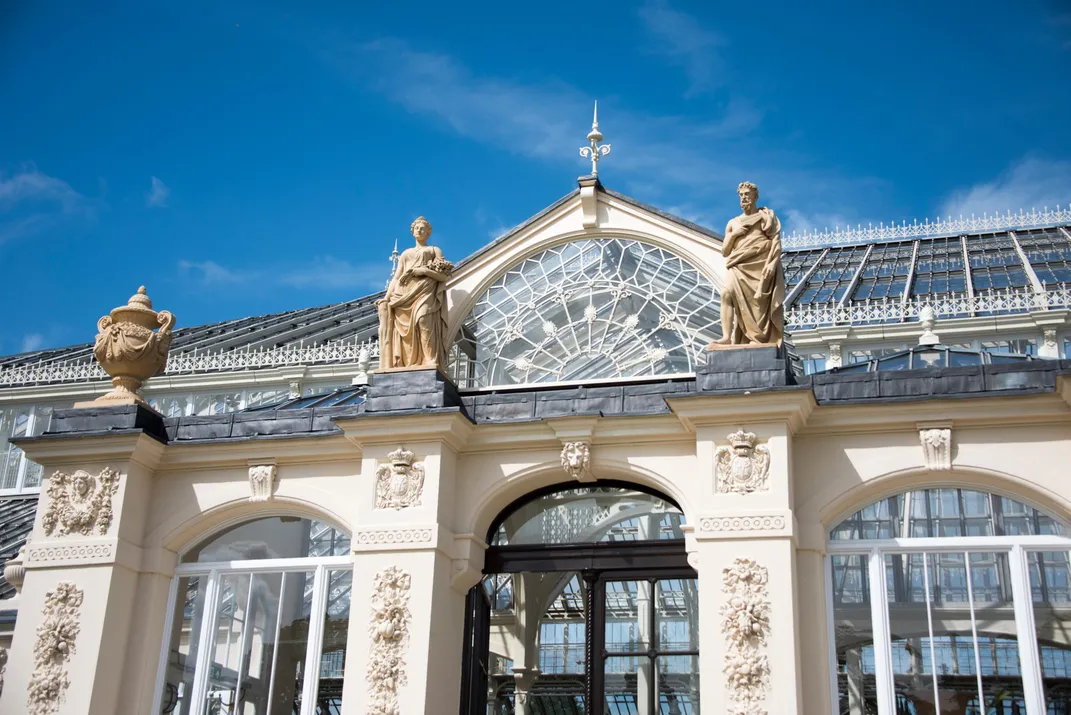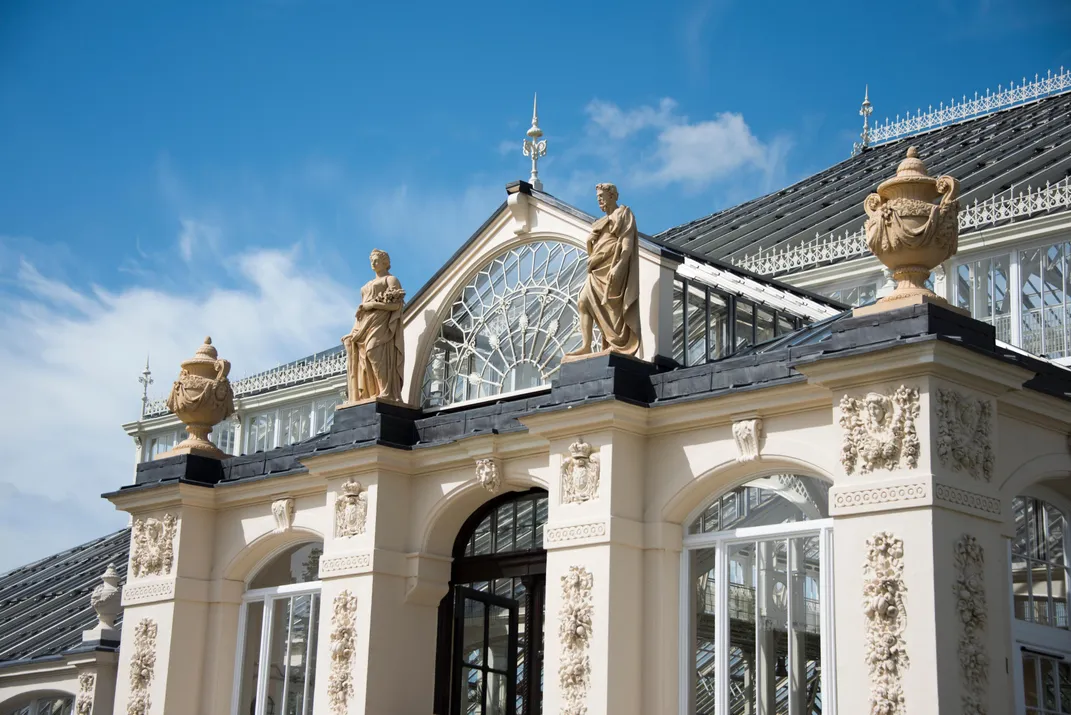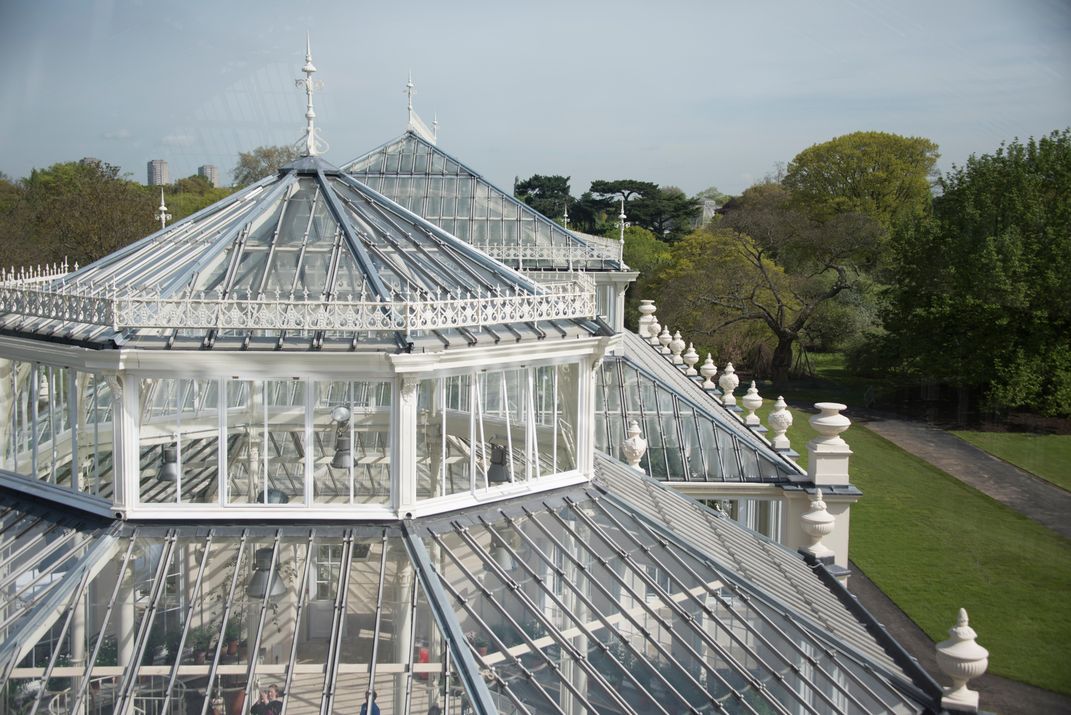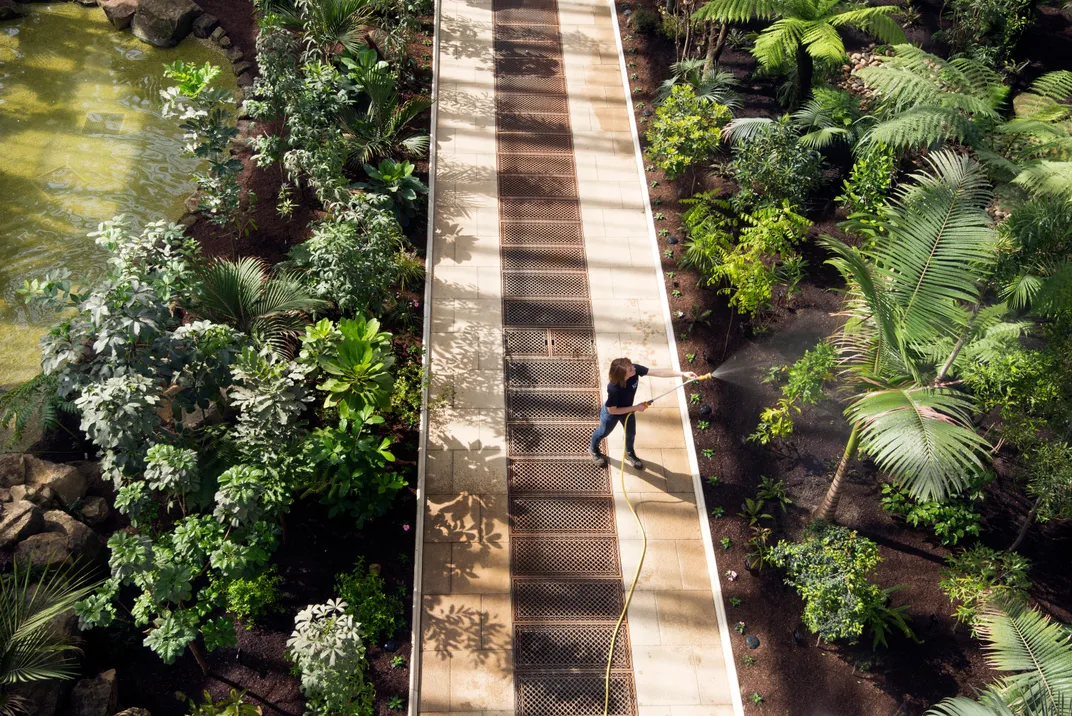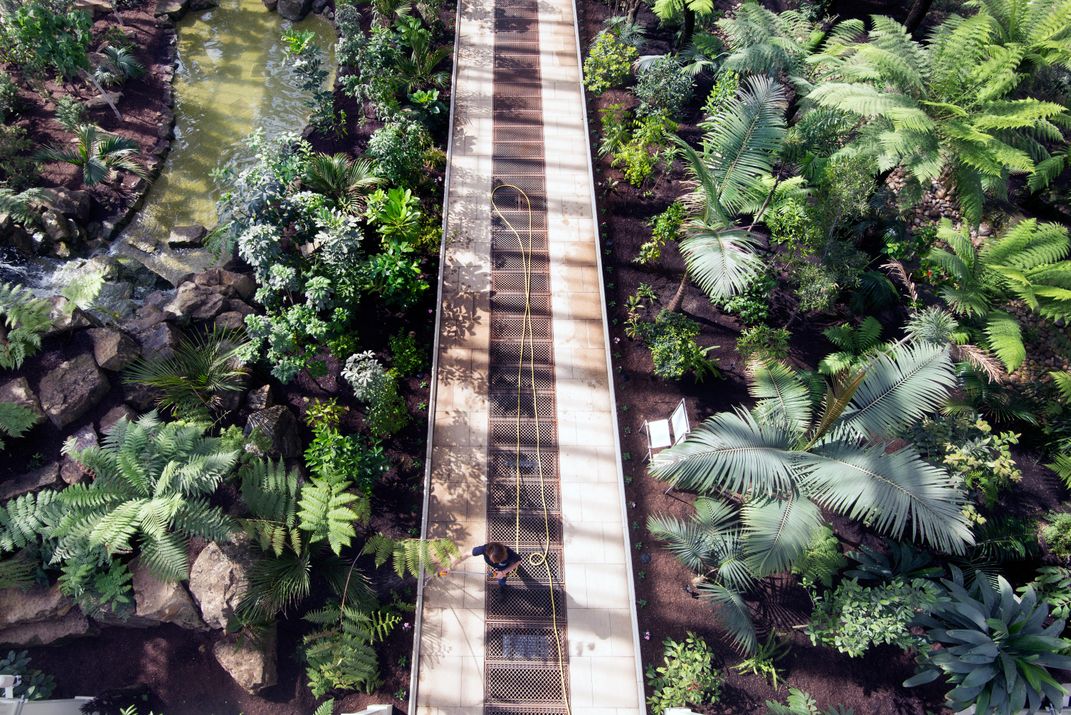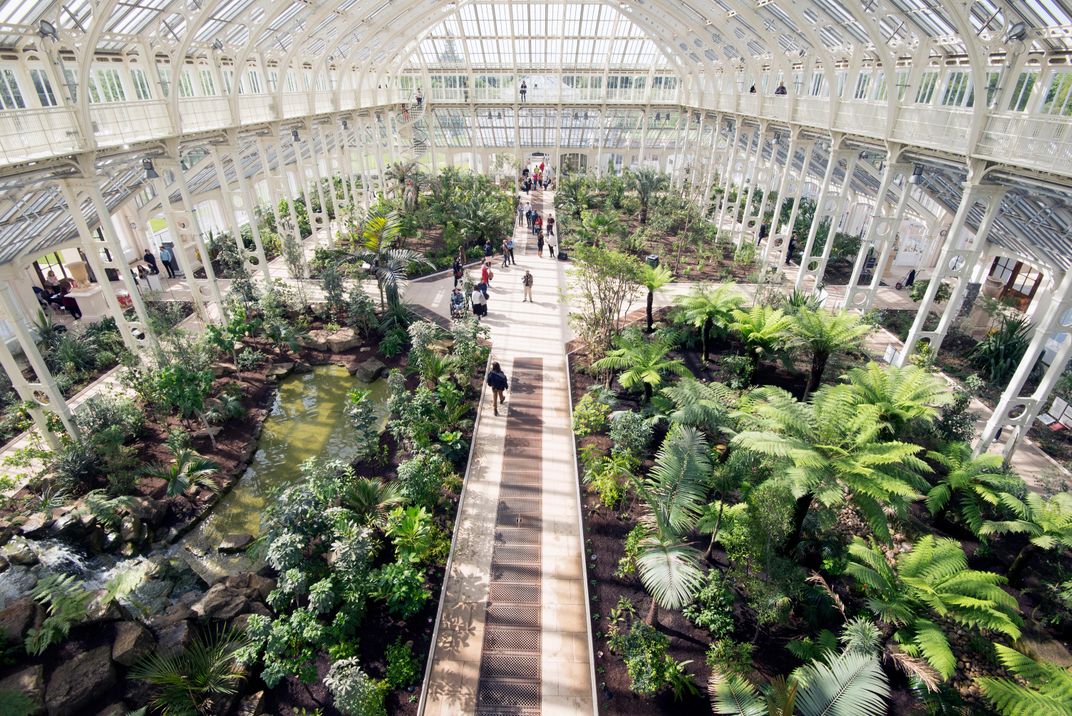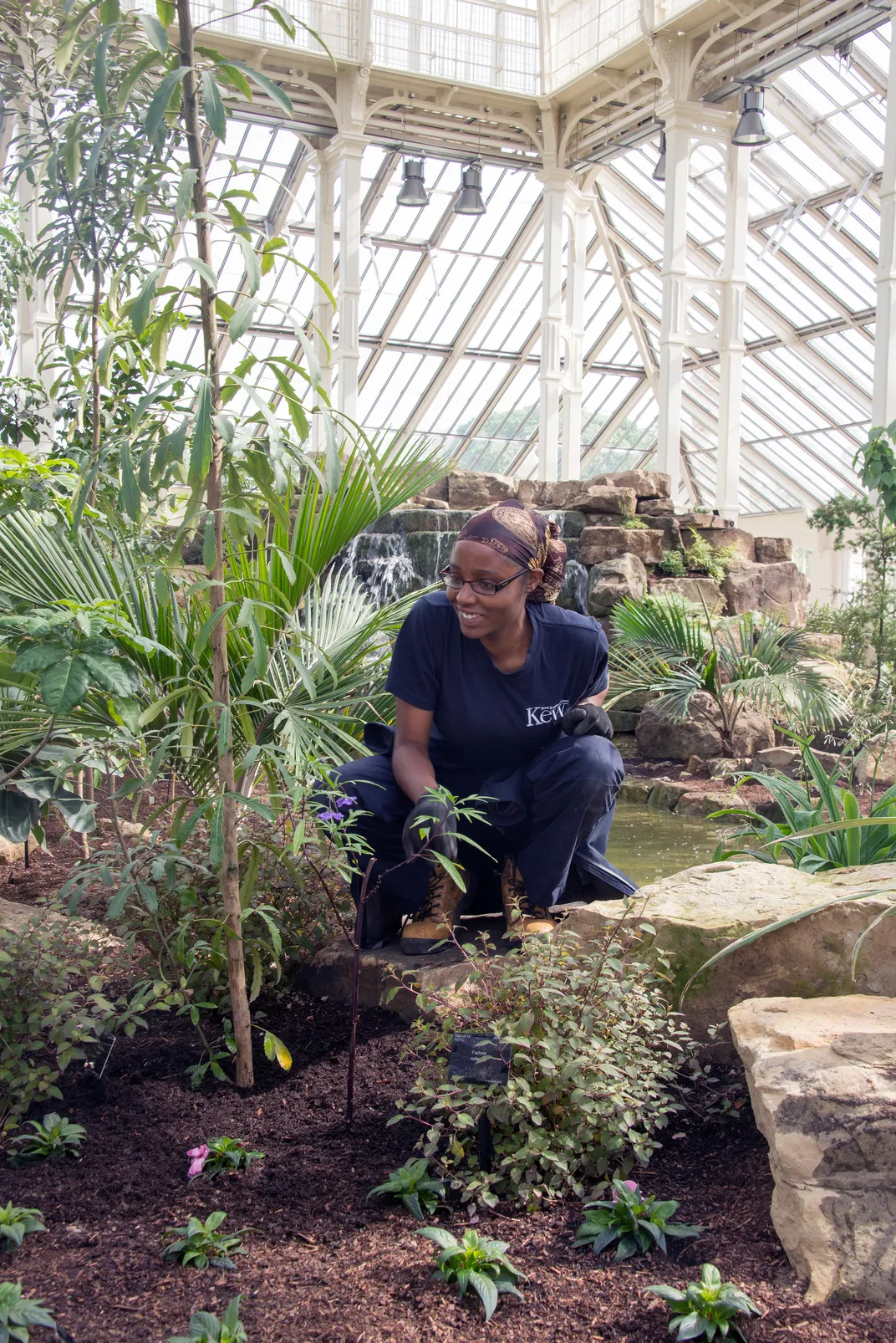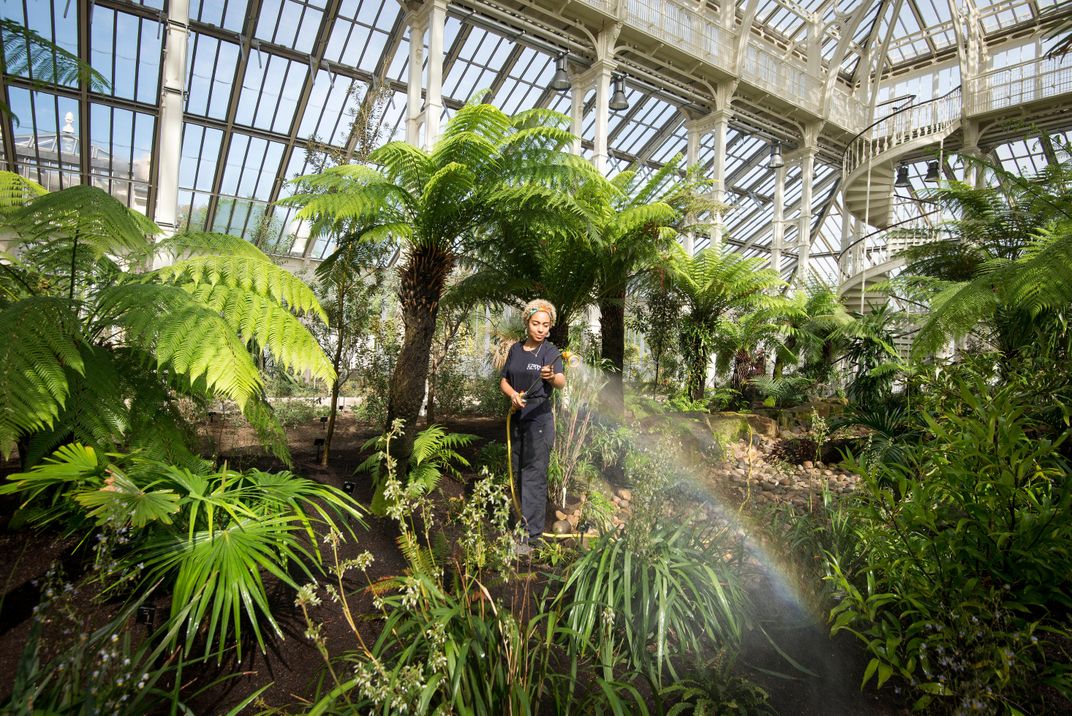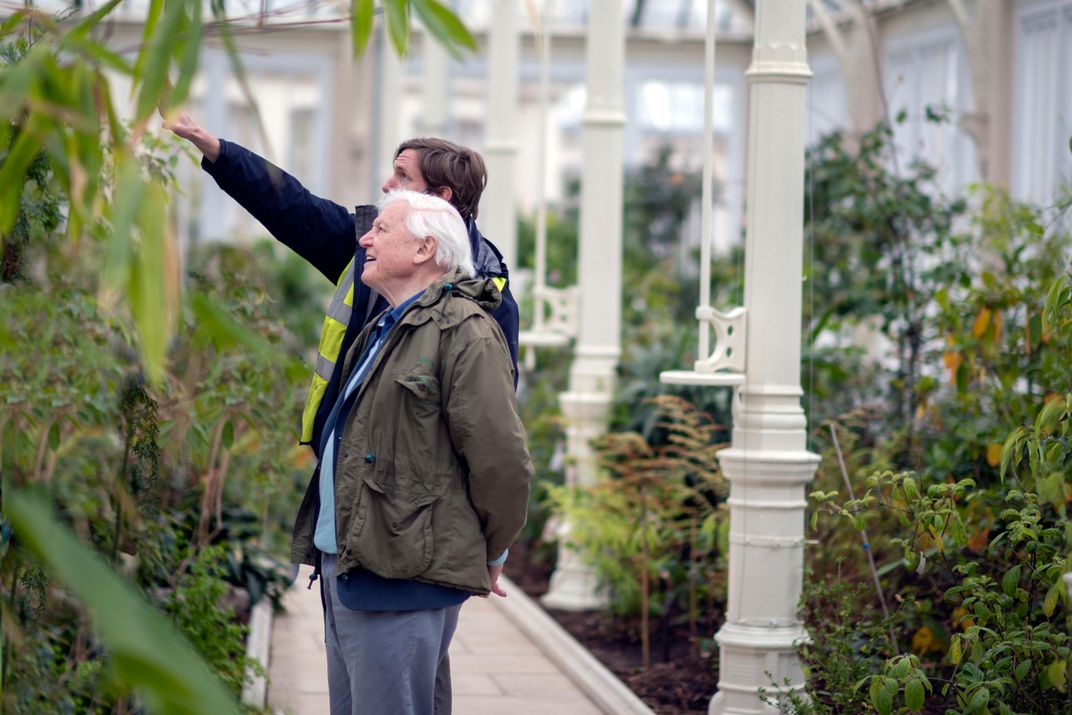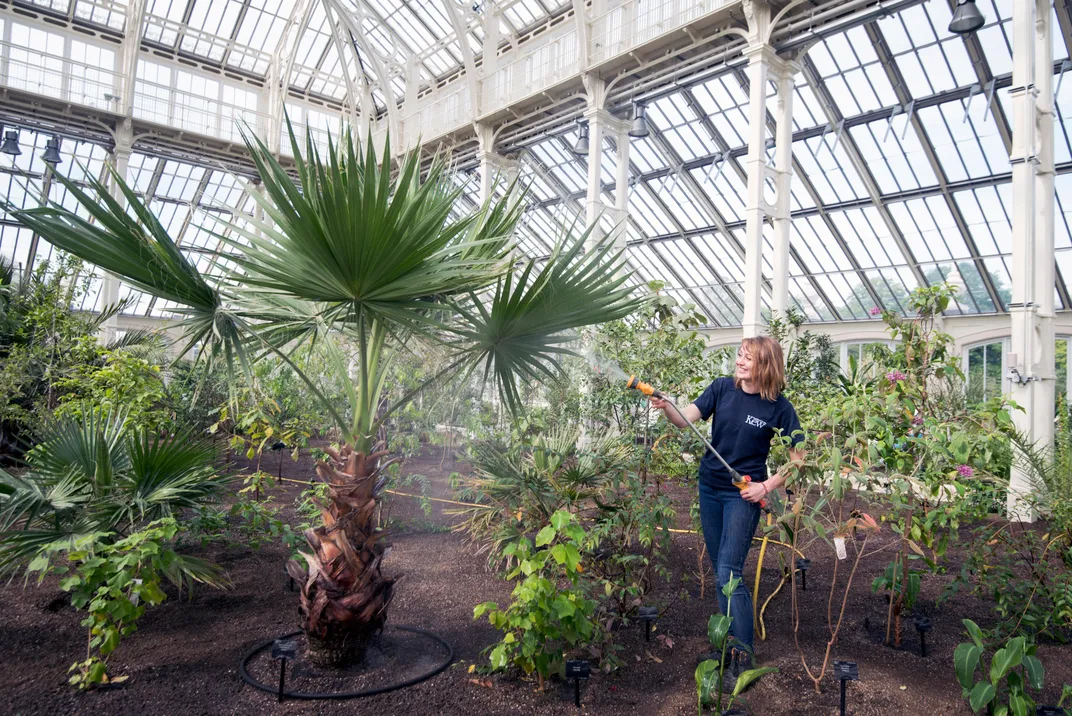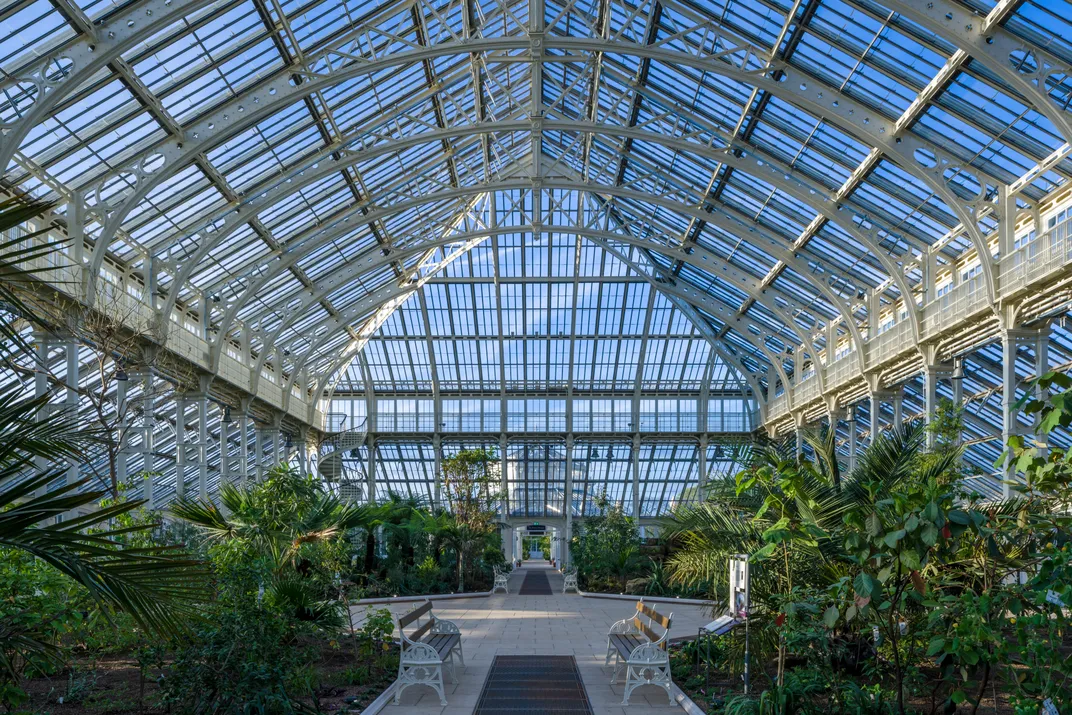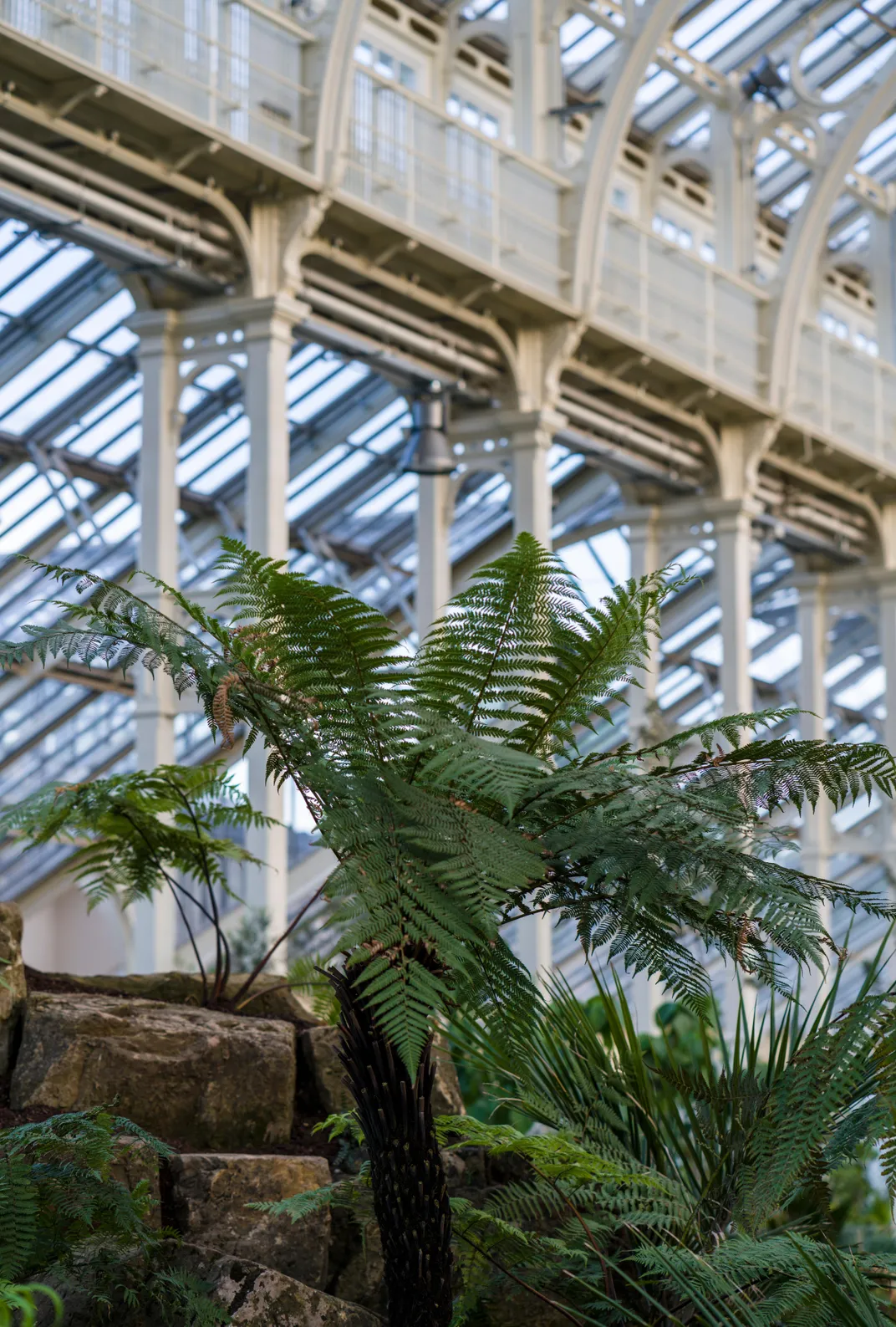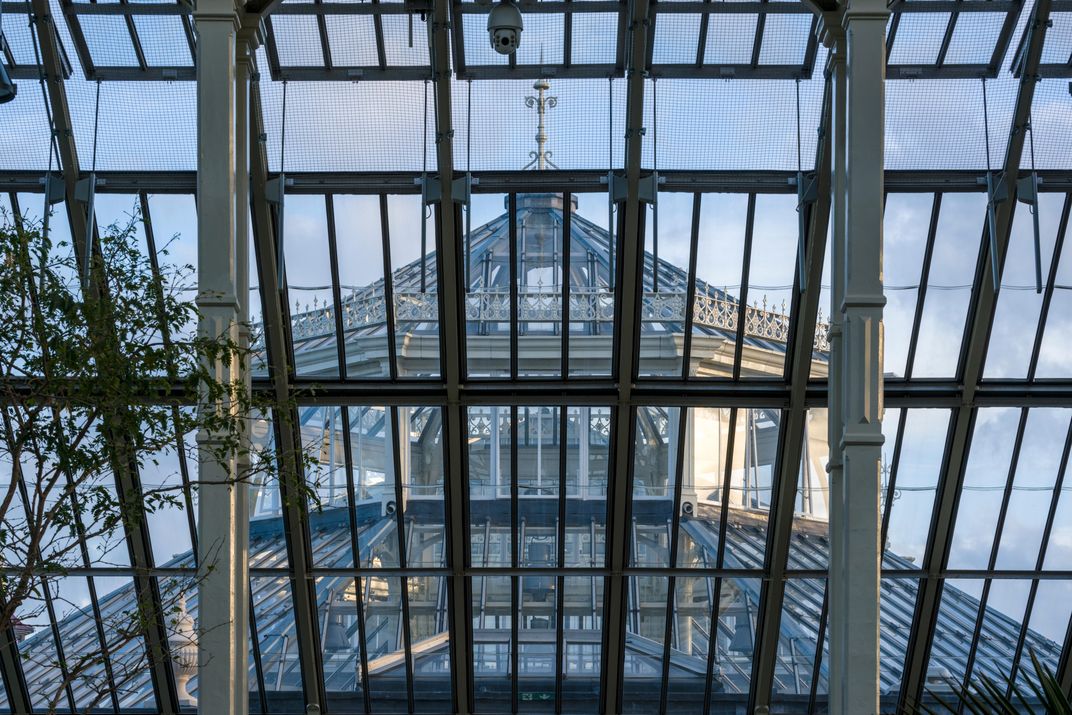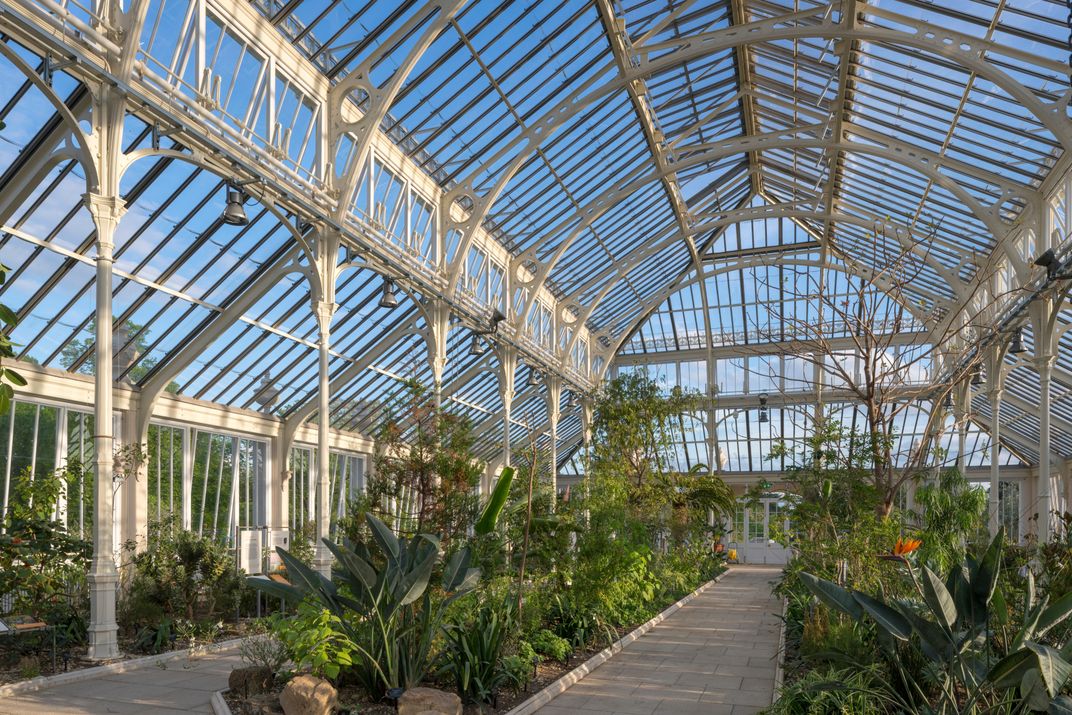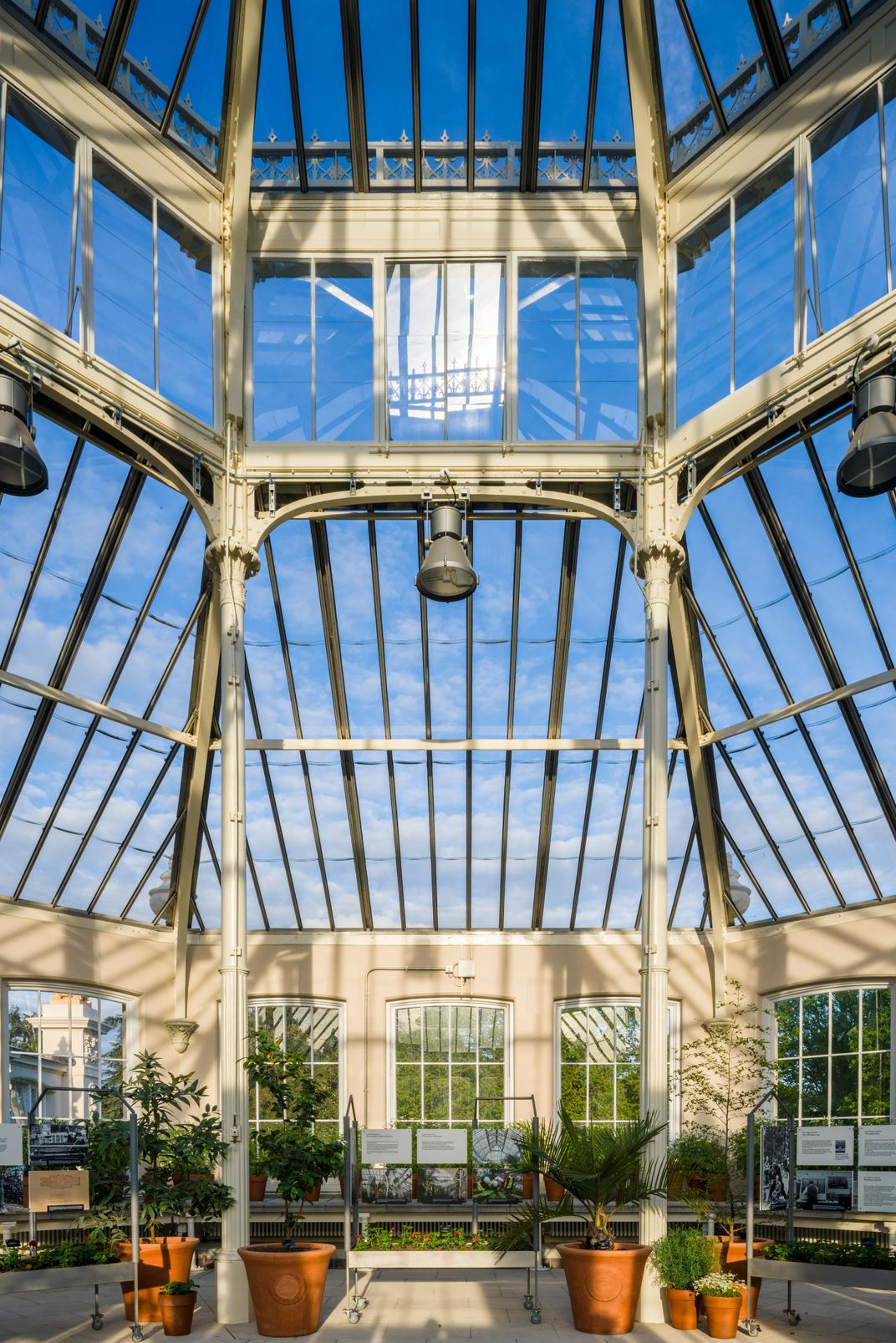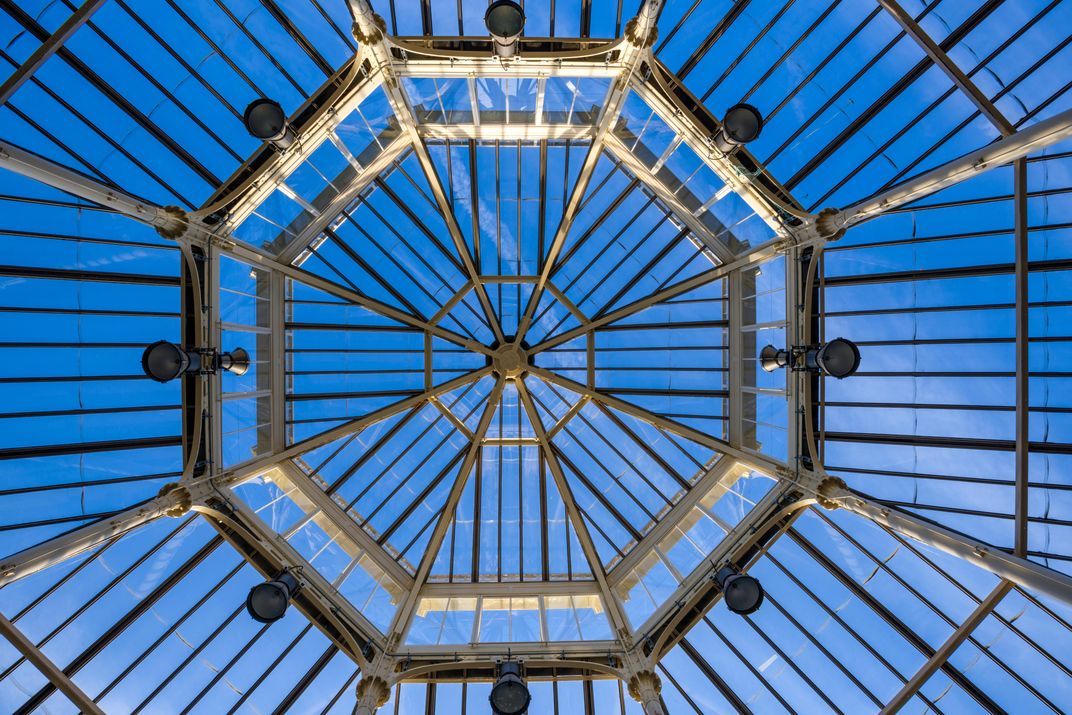World’s Largest Victorian Glasshouse Opens Doors After Five-Year Restoration Project
London’s Kew Gardens’ Temperate House is home to some of the world’s rarest plants
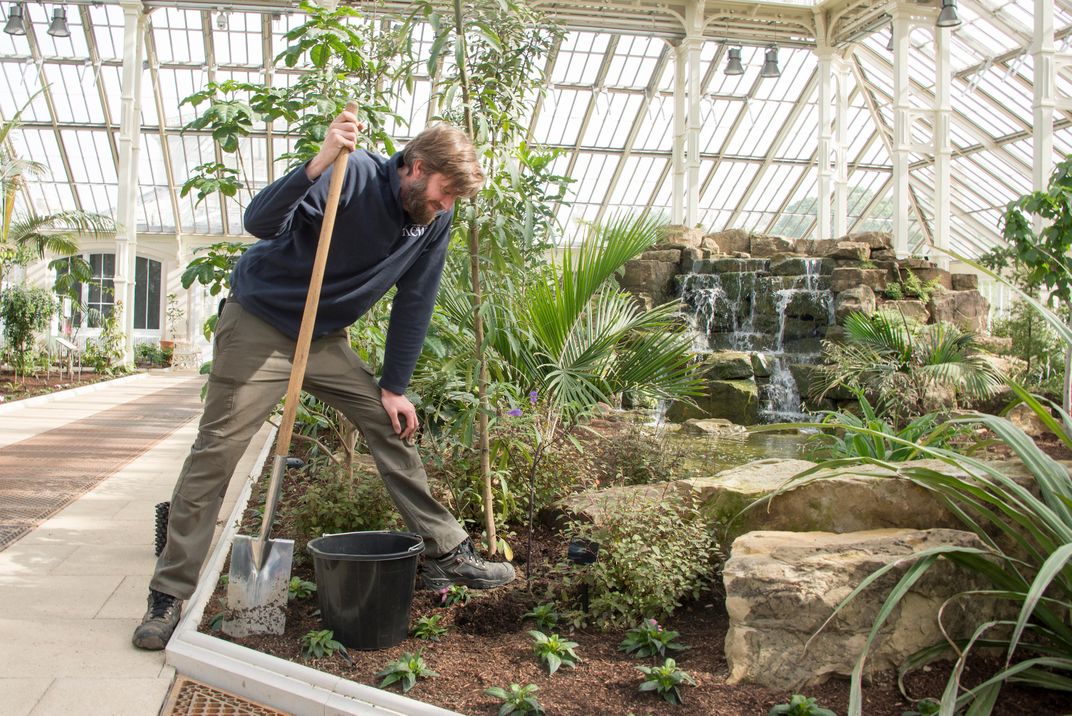
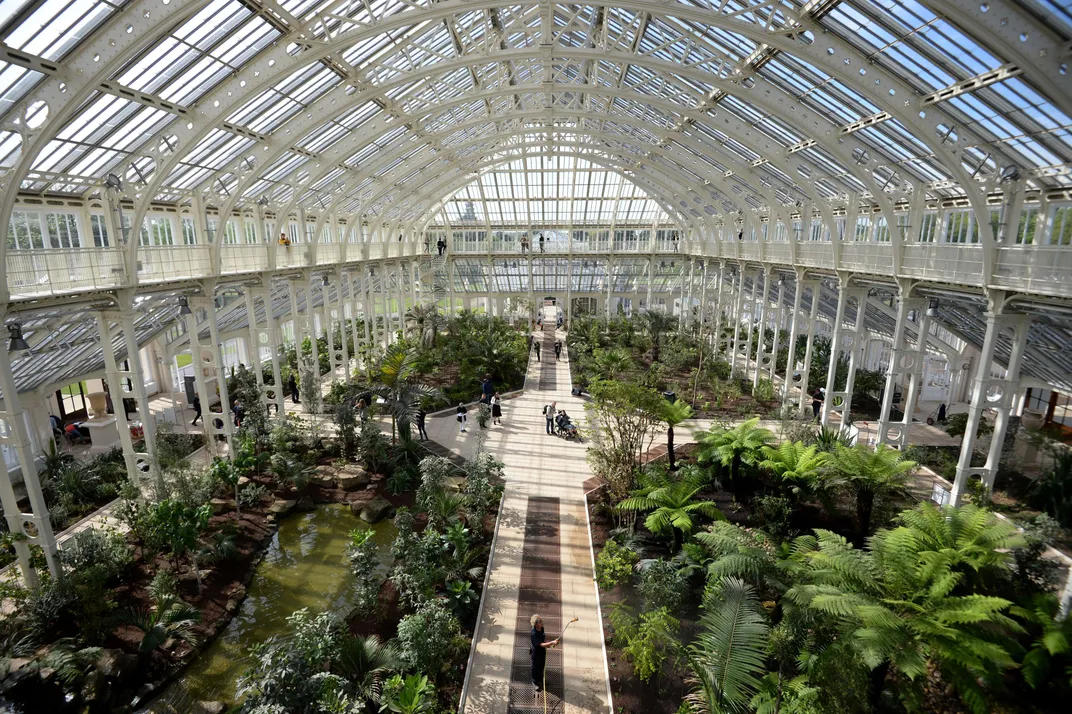
The largest Victorian glasshouse in the world first opened its doors to the public in 1863. Designed by Decimus Burton, one of the foremost English architects of the 19th century, the Temperate House at the Royal Botanic Gardens, Kew, was a marvel of its age.
But in 2010, almost 150 years after its public debut, time had caught up with the 52,528 square-feet glasshouse. A government-commissioned report that year called for urgent restoration work if the iconic greenhouse wanted to stay open.
Now, after a massive, five-year overhaul, the Temperate House has reopened to the public, restored to its former glory, Alicia Canter reports for The Guardian.
This is the first time the glasshouse underwent a complete renovation, writes BBC News’ Victoria Gill. Some 69,000 individual elements were cleaned, repaired or replaced during the process, not to mention some 10,000 plants had to be uprooted and replanted.
According to the Kew Gardens website, the Temperate House’s function is to safeguard its approximately 4,000 different temperate zone plants from around the globe, many of which are rare and threatened.
“We use these plants for scientists to come and do DNA work, so the role that these plants play is phenomenal,” says lead horticulturalist Scott Taylor, in a video by the Kew Gardens.
Each of the plants has its own unique history. Take a palm-like plant called Encephalartos woodii or Wood’s Cycad. Atlas Obscura calls the cycad, which has survived five ice ages, "the loneliest plant in the world" because none are believed to be left in the wild. The plant is dioecious, meaning it cannot self-fertilize. So while clones of the male Wood's Cycad have been created, the original plant waits in London, perhaps in vain, for a female specimen to reproduce with.
It goes without saying that one of the biggest challenges for the team at the Kew Gardens — an Unesco World Heritage site — was how to look after the Temperate House’s plant collection during the restoration. While some 500 "legacy plants," like the Wood's Cycad, were housed in a temporary nursery during the restoration, a decision was made to replace most of the plants at the greenhouse with younger specimens that will keep the collection going strong for years to come.
“[Older specimens] were hitting the roof, and it was very difficult to raise new specimens under the thick canopy,” Greg Redwood, head of glasshouses at Kew Gardens, tells The Guardian’s Oliver Wainwright.
That means that, for the first time in a long while, the architecture of the glasshouse will be fully visible for visitors to appreciate, Wainwright reports. It will stay that way for years to come, as the young plants grow into their new digs and make it their own.
Get the latest stories in your inbox every weekday.
Julissa Trevino | | READ MORE
Julissa Treviño is a writer and journalist based in Texas. She has written for Columbia Journalism Review, BBC Future, The Dallas Morning News, Racked, CityLab and Pacific Standard.
